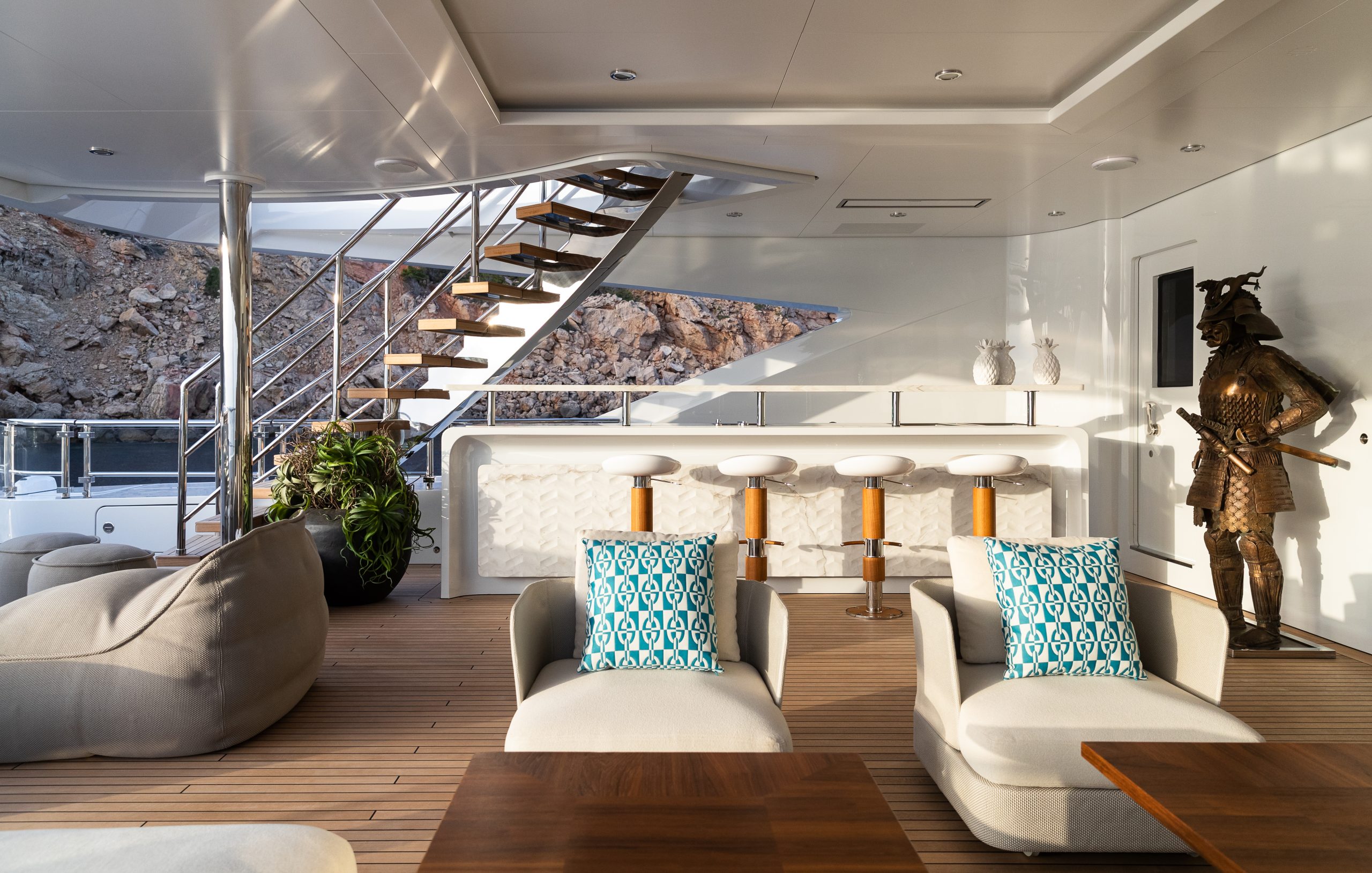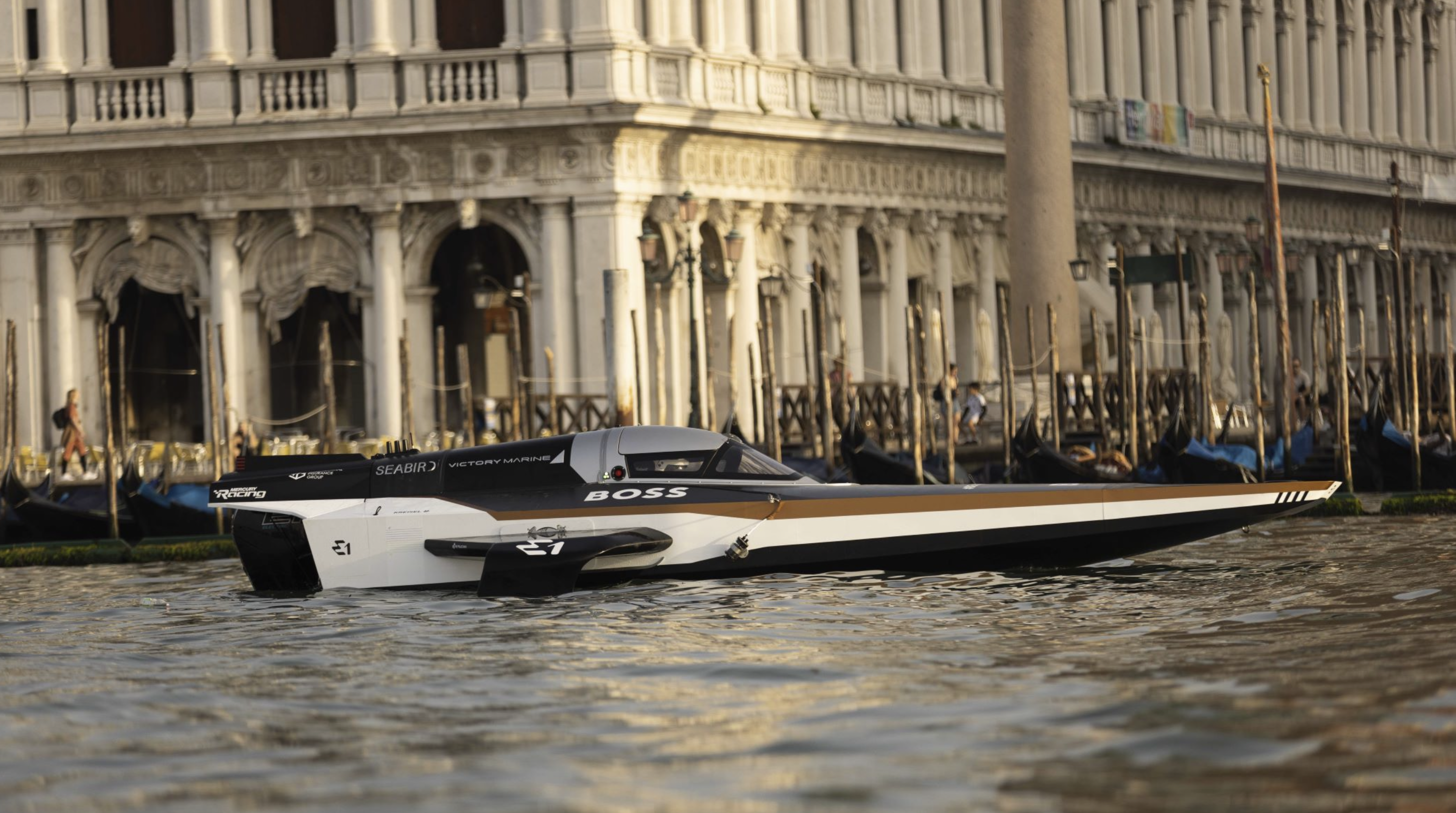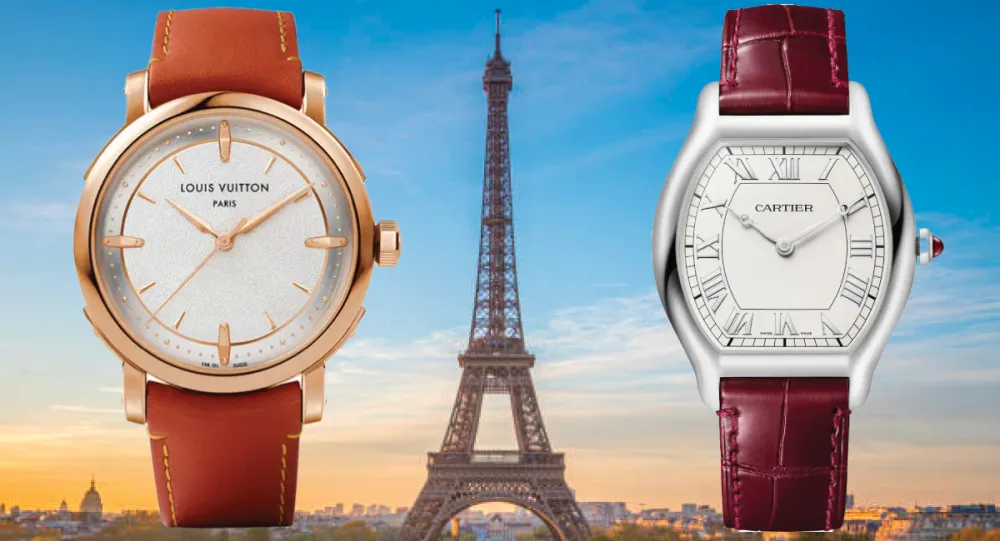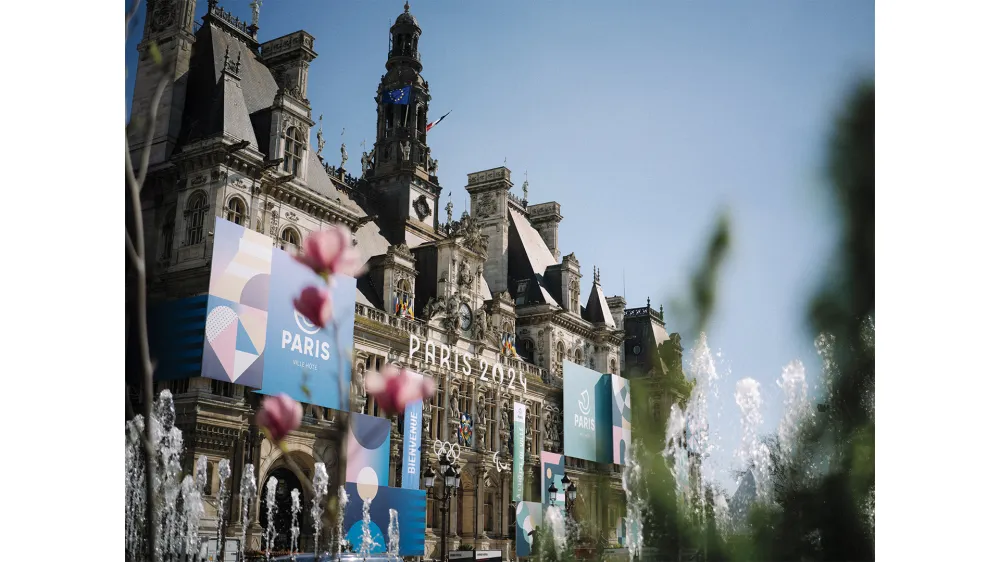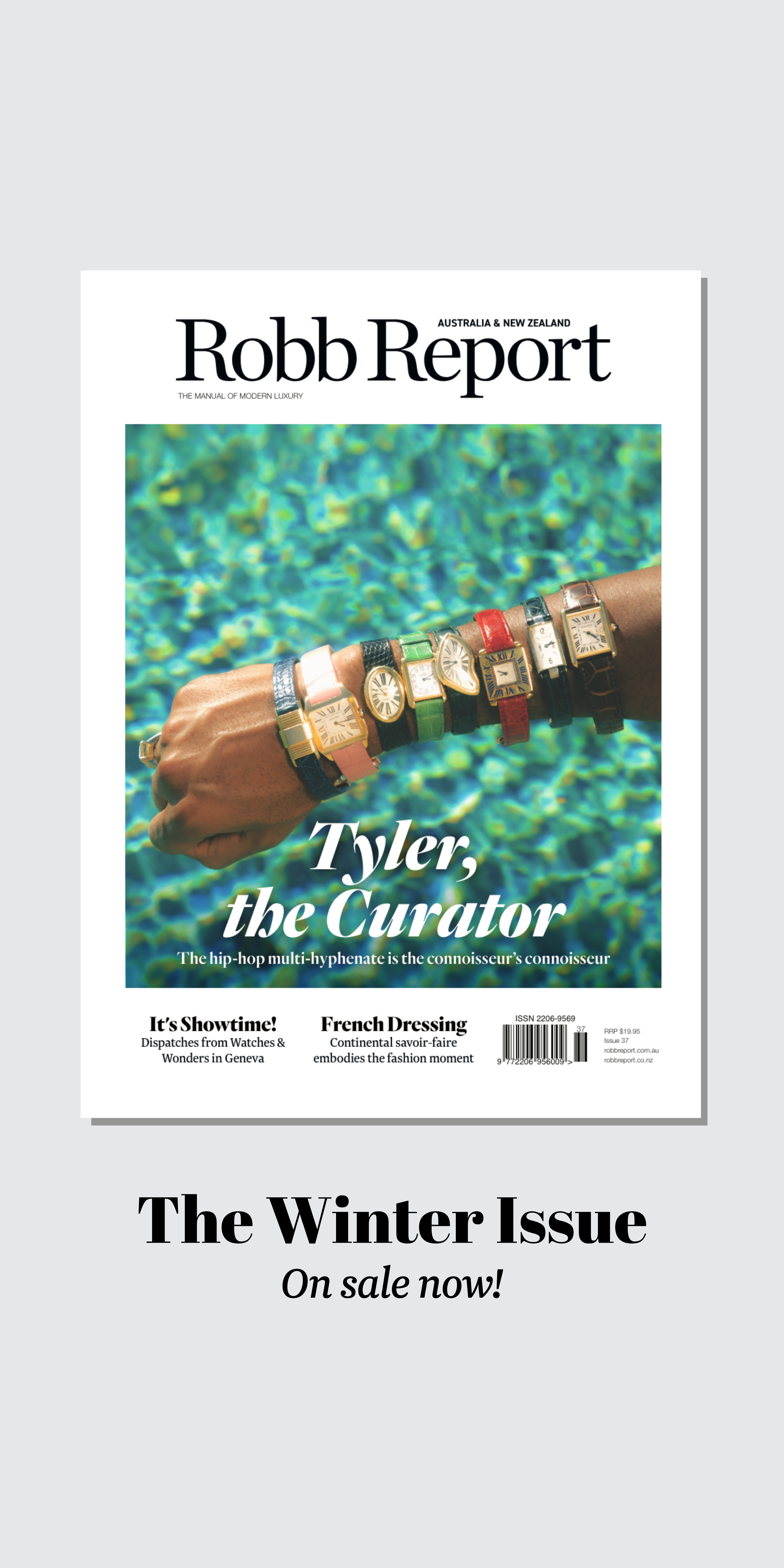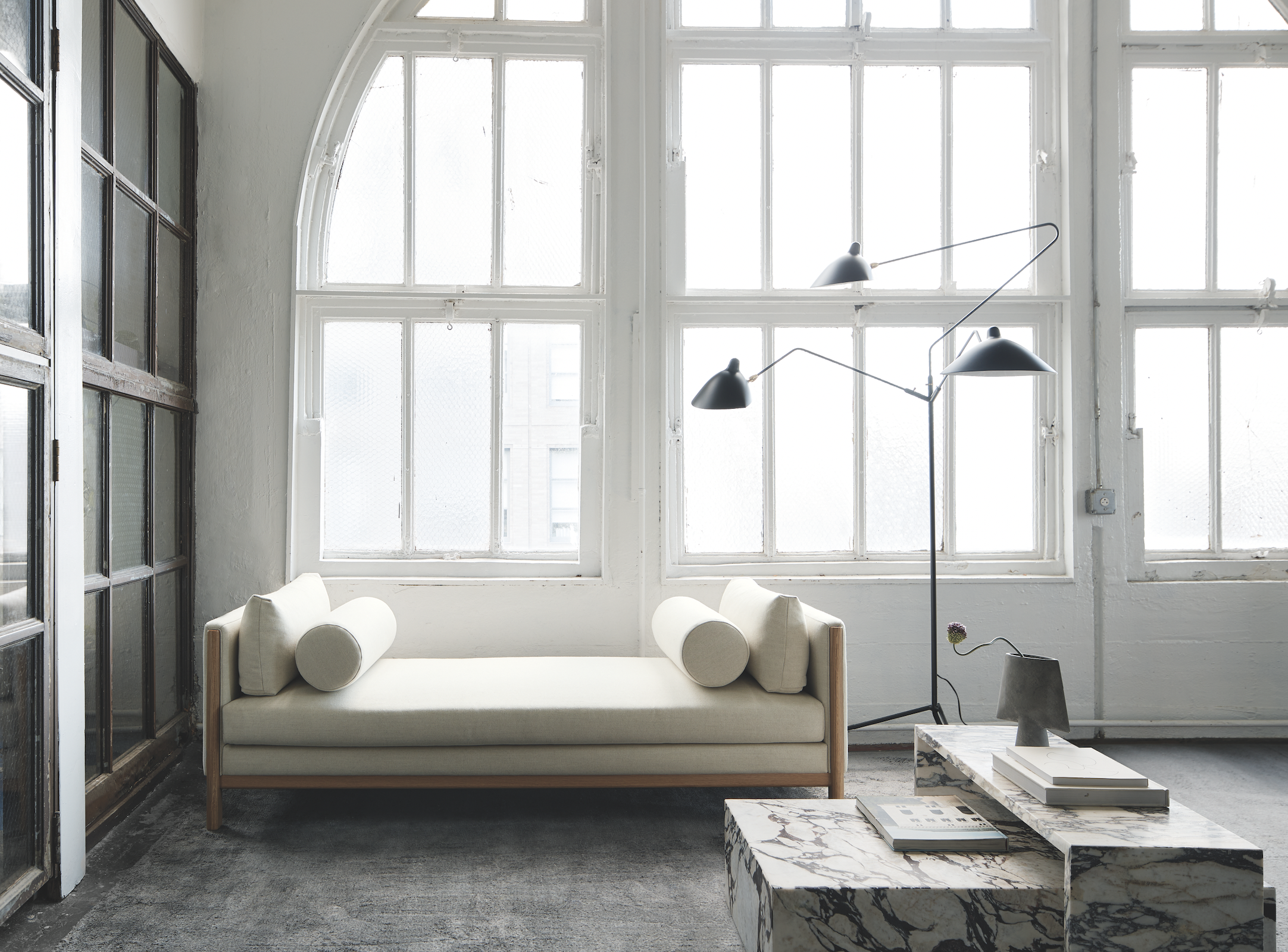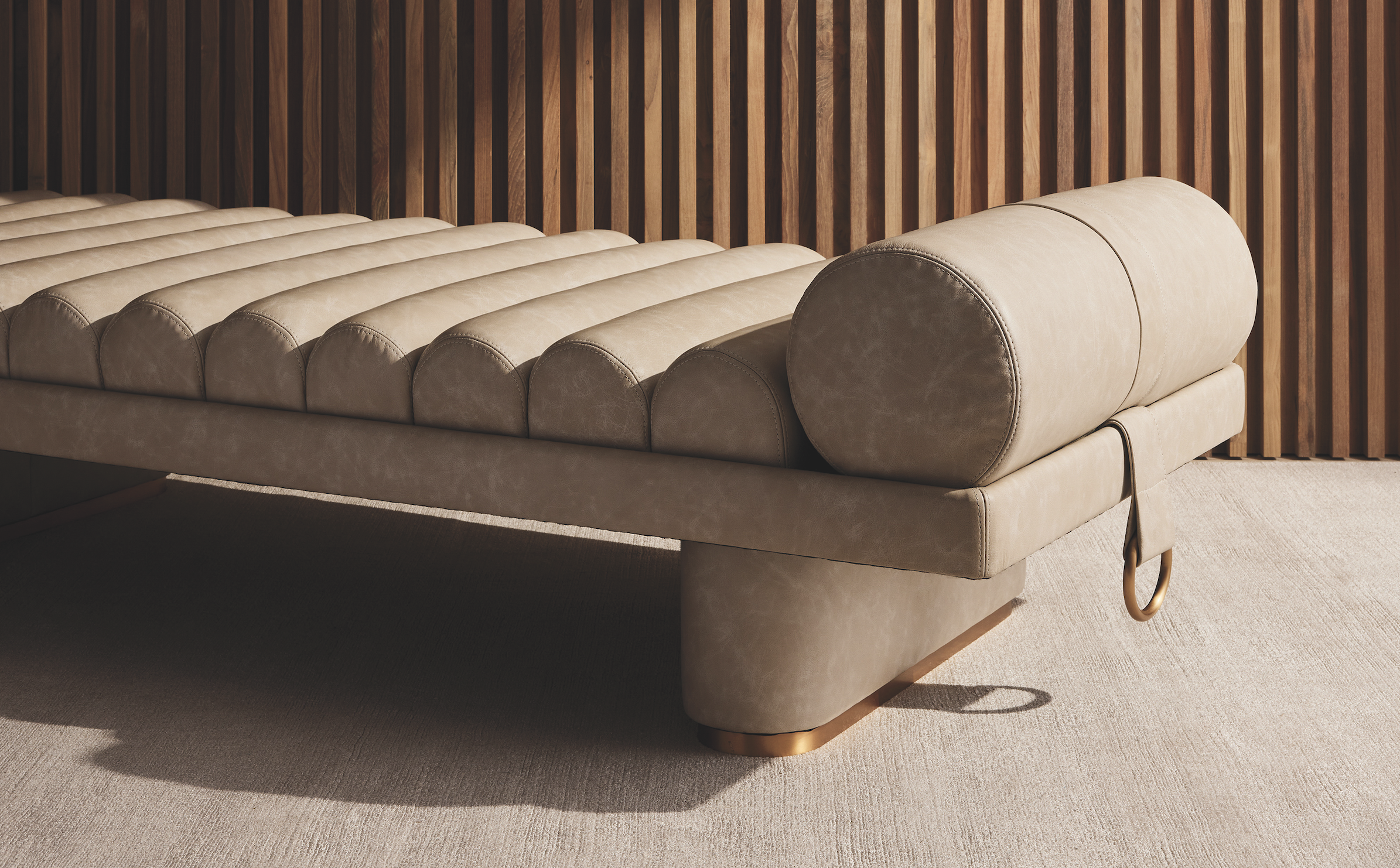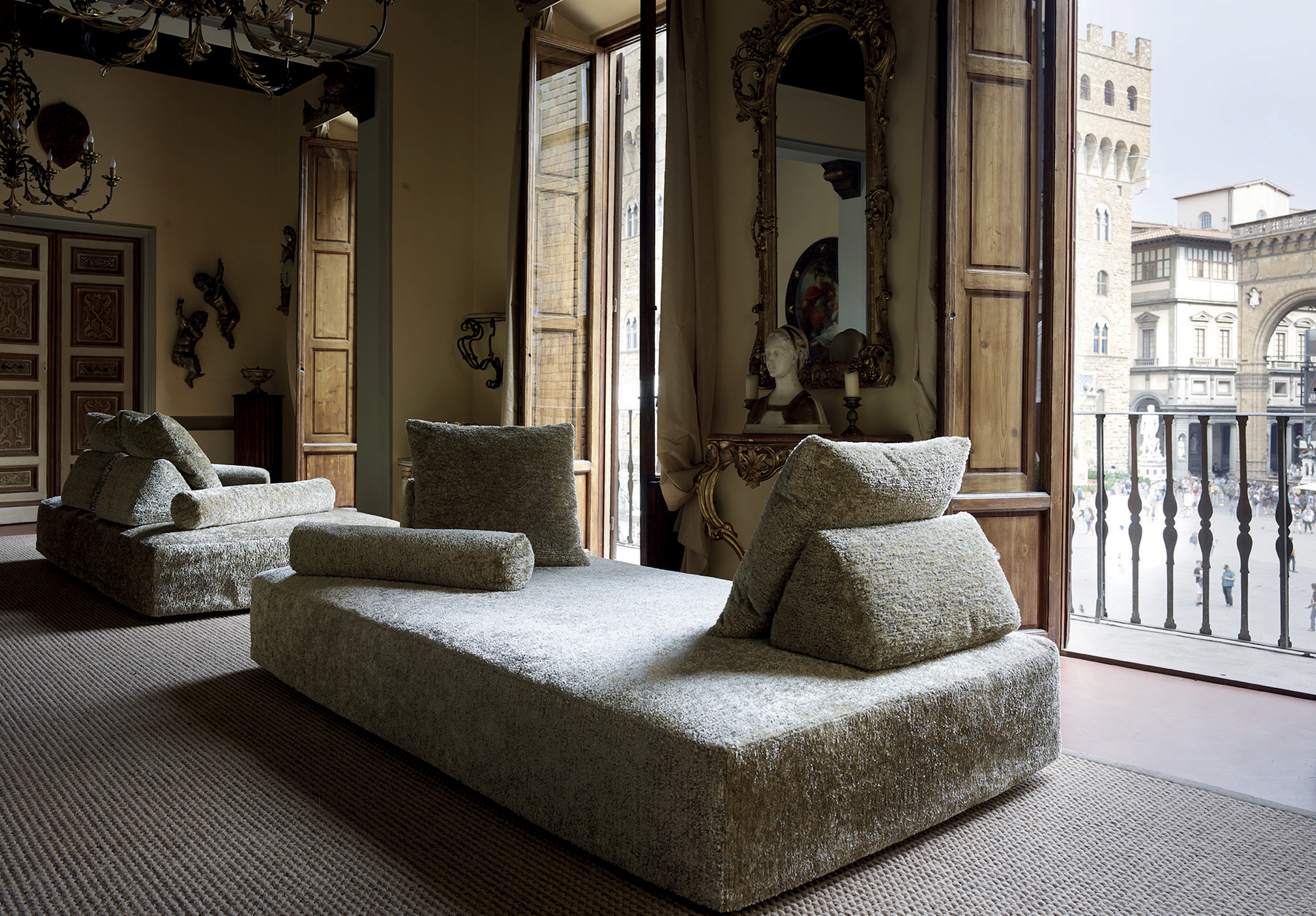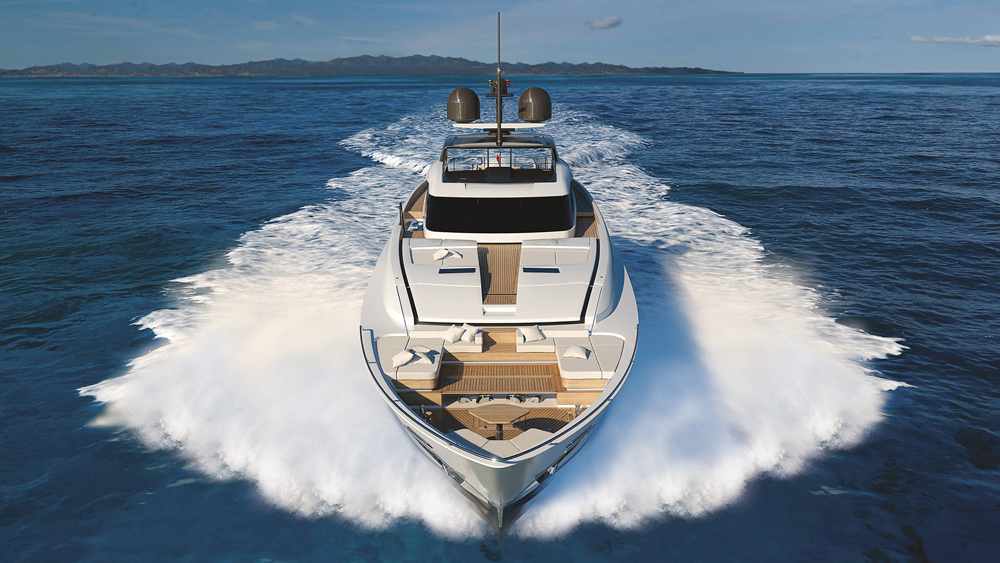
The top 24 yachts at the Fort Lauderdale Boat Show
Take a tour of the largest and newest superyachts at the Fort Lauderdale International Boat Show
Related articles
Every autumn at the tail end of hurricane season, yachting enthusiasts and industry insiders travel to South Florida to inspect boats big and small from all over the globe. We are, of course, talking about the Fort Lauderdale International Boat Show, the largest in-water boat show in the world, scheduled this year for October 31 to November 4. The 2018 edition marks 59 years of this event, which hosts more than 1,500 boats—along 10km of floating docks—1,200 exhibitors, and 110,000 visitors at seven locations around Fort Lauderdale. Not only will visitors find all kinds of vessels—from superyachts and sailing yachts to jet boats and runabouts—but also exotic cars, watersports gear, and everything nautical.
Here are the yachts we think you should not miss.

Abeking & Rasmussen Elandess
Photo: Courtesy of Abeking & Rasmussen
Abeking & Rasmussen Elandess
By Geri Ward
This 74-metre superyacht surprised London last summer when it journeyed up the Thames, just weeks after its launch. Elandess also promises to wow Fort Lauderdale as the queen of the show. Designer Harrison Eidsgaard created a very special gigayacht with German builder Abeking & Rasmussen, including expansive social areas across the interior and exterior that equate to special family moments for the owners. Standout features include an 2.5-by-8- metre swimming pool up on the sundeck, and the Nemo Lounge beneath the waterline that includes a window into the ocean below. The yacht has seven suites, including the master apartment, for 14 guests and crew quarters for 24.

Amels Gene Machine
Photo: Courtesy of Amels
Amels Gene Machine
By Geri Ward
Gene Machine is not a new launch, but its American owner wanted it to be part of FLIBS in order to show the world the possibilities of Amel’s 180 Limited Editions range. The exterior design by Tim Heywood includes a distinctive grey hull with an orange stripe along the water, and a profile that slopes downward as it moves aft. The sundeck is devoted to the sun, with an open space forward, Jacuzzi in the middle, and yet more open space on the aft end. It’s probably the best viewing platform for any yacht its size. Enzo Enea’s interior includes an expansive saloon with floor-to-ceiling windows and a formal dining table in the forward section. Among the yacht’s many distinctive features are a “command chair” that rises above a table and other chairs, like a judge sitting on the bench, in the cockpit area, and a mural of sea creatures, including a grinning shark, in the children’s bedrooms. It’s a fun yacht, designed for spending time in the tropics.

Mangusta Oceano 43 Namaste
Photo: Maurizio Paradisi
Mangusta Oceano 43 Namaste
By Danielle Cutler
Also not a new yacht, but the first hull in the Oceano 43 line that launched last year, the 42-metre Namaste is the first Mangusta Oceano to hit the States and is making its first appearance at FLIBS. Designed inside and out by Alberto Mancini, Namaste is built in steel and aluminium, the long-range tri-deck is built in steel and aluminium. Highlights of Namaste’s exterior include the foredeck glass-bottomed pool, which provides a skylight to the master bath below, and a dedicated beach club, thanks to a forward tender garage.
Inside, sliding-glass doors on each side of the main saloon pull in natural light and sea breezes, and opens up the entire space to the outdoors. Namaste accommodates up to 12 guests in five staterooms, including the master suite with fold-down balcony. Seven crew members are housed in four cabins, one of which is the captain’s. Namaste has a top speed of 15 knots, a cruising speed of 11 knots, and a range of more than 4500 nautical miles.

Custom Line 120
Photo: Courtesy of Ferretti Group
Custom Line 120
By Danielle Cutler
Created Francesco Paszkowski Design, the new Custom Line 120 combines pieces of aeronautical, automotive, and residential design, as well as that of racing yachts, to create a sporty planing superyacht.
A noteworthy feature of the Custom Line 120 is the glass door between the aft cockpit and the main saloon. It rests at a 45-degree angle, and to open it tilts up into the ceiling and also opens horizontally. This makes for a true indoor/outdoor living space. Paszkowski and the Ferretti Group designers created the interior decor. Besides the main-deck master suite, four en suite staterooms reside belowdecks—two VIPs and two singles. Crew quarters are forward and include four cabins.
The flybridge offers up a hot tub and lounging space as well as stairs that lead to the forepeak dining and lounging area. Two garages are located at water level—one at the stern and one forward. All told, the 120 can carry two tenders and a three-person Jet Ski.
The new hull design reduces resistance and, with its pair of MTU 16V 2000 M96L engines, hits a top speed of 25 knots. Its cruise speed is 21, but in the 120’s “economical cruising speed” of 11 knots, the yacht has a range up to 1100 nm.

Adagio’s saloon and dining area.
Photo: Frankie
Horizon 115 Adagio
By Geri Ward
Horizon’s “CC” designator stands for Custom Collection, which means that owners get their new yacht the way they want it, from the exterior and interior layout all the way to the custom decor. In the case of the 35-metre Adiago, which will debut at FLIBS, the client commissioned Cor D. Rover, a noted Dutch superyacht designer, and the builder’s in-house design team to create a Horizon like no other. The designers gave a potentially conventional-looking exterior a more contemporary look by turning most of the foredeck into a sloping social area, adding large windows on the main deck, and creating a softer, less angular stern than most yachts its size. Add to that, a huge saloon with floor-to-ceiling windows, Dessie’s custom designer furniture from Italy, a Listone Giordano wood floor, and large beach club, and the yacht becomes a long-distance haven. The 115 is powered by twin 1200kW Caterpillar diesels that deliver a top end of 17 knots, and it cruises at 12 knots.

Sanlorenzo SL106’s main saloon
Photo: AEB Photo Design
Sanlorenzo SL106
By Geri Ward
Being on a 30-metre-plus yacht that reaches a top speed of 30 knots is a highly unusual experience. Add to that the contemporary design and open space of Sanlorenzo’s SL106 and you get a one-of-a-kind ocean runner. The planing yacht, which makes its US debut at FLIBS, offers two MTU diesel power options. The 1966kW twins, the larger of the two choices, give SL106 a top-end speed of 30 knots. The 1815kW option shaves off four knots, but is still notably faster than most yachts its size. Sanlorenzo’s design team went for an open interior, from stern all the way to the bow, that features a large saloon at the rear and dining room/family lounge in the front of the yacht. The Italian builder’s design team combined wood, marble, linen, and silk with bronzed and polished steel to create a contemporary but quite elegant interior. The SL106 also has opening terraces in both the saloon and owner’s stateroom. Nice touches like transparent side walls on the flybridge and teak handrails on the stern show that Sanlorenzo has thought about every feature on the yacht.

Hargrave Raised Pilothouse MB3
Photo: Courtesy of Hargrave
Hargrave 100 MB3
By Danielle Cutler
Delivered to its owners this year, the 30-metre semi-displacement Hargrave raised-pilothouse yacht MB3 features exterior styling and naval architecture by Hargrave and a soothing interior from Yacht Interiors by Shelley. Not common on European models, MB3 has a country kitchen with a casual dining space and kitchen counter to watch the chef in action. Four staterooms accommodate eight guests in a full-beam master stateroom with his-and-her bath, two VIP staterooms, and a twin cabin that converts to a king stateroom. A hot tub on the flydeck beckons guests up top to the bar and seating area—or maybe it’s the other way around. And a beach club at water level provides easy access to watersports, as well as a great space for sunning. Two 485kW Caterpillar engines give MB3 a top speed of 23 knots.

Ocean Alexander 90R
Photo: courtesy Ocean Alexander
Ocean Alexander 90R
By John Lyon
FLIBS sets the stage for the world debut of the first yacht in Ocean Alexander’s new Revolution series: the 90R. The 27-metre tri-deck motor yacht was designed by Evan K. Marshall along with Italian firm Arrabito Naval Architects. The flybridge’s upper deck is equipped with an indoor skylounge as well as an open-air bar and grill for cooking up some quick comestibles. Stonework is used extensively throughout the vessel, and on this deck, the bar and cabinet countertops are made from Cambria Berwyn stone. The main deck is home to the saloon, including its expansive views through floor-to-ceiling windows, as well as the master stateroom, which is outfitted with his-and-her closets and a bathroom with floors and walls covered in stonework. A deck below, guests can find respite in two regular cabins and a full-beam VIP stateroom. The lower deck is also home to the beach club, which stands out by not only having a bar area but also a skylight that can bathe the area in natural light or provide a window to the stars at night.

SX88’s saloon
Photo: Leo Torri
Sanlorenzo SX88
By Geri Ward
Sanlorenzo’s new SX88 is called a “crossover” boat because it combines the features of a motor yacht and a much larger explorer yacht. The Italian builder actually raised the new concept to a higher level with clever innovations like a fully open-plan main deck (thanks to the absence of a lower helm station) that stretches the full length of the interior. The design allows the owner to choose between a long, open layout or a forward area with an owner’s stateroom. The SX88 also has an open stern that holds a 4.5-metre tender and personal watercraft for quick deployment. The area also has a sizable beach club. Sanlorenzo worked with Italian designer Piero Lissoni on the first interior and Officina Italiana Design for the quirky exterior. Lissoni’s interpretation for the interior is another choice for onboard living, offering the ambiance of an open sea loft. The yacht has a semi-displacement hull that reaches 17 knots. Its hybrid diesel-electric powerplant allows an owner to use the lighting, systems management, and other non-propulsion systems for up to eight hours in zero-emissions mode. The SX88 is a breakthrough yacht on many levels.

Numarine 26XP explorer yacht
Photo: Courtesy Numarine
Numarine 26XP
By Geri Ward
The 26-metre Numarine 26XP represents the new breed of mini-expedition yachts. Along with its sister ship the 32XP, the 85-foot 26XP has a highly efficient hull, high freeboard and intrepid profile, and a special flybridge that covers about two-thirds of the hull’s length. The bridge has 100 square metres of usable deck space, allowing owners and guests to find their own private areas with space left over on the aft deck for a tender.
The yacht has a generous, full-beam saloon on the main deck, with full-height windows, a dining area, and settees for congregating. Designer Cal Yalman also left abundant space belowdecks for the four staterooms, including the full-beam master suite amidships, where the yacht is widest. A VIP and two twins comprise the other three. Numarine worked with Silent Line to make the yacht as noise- and vibration-free as possible, using techniques that are more often applied to superyachts. The yacht comes in a displacement-hull version, which has a maximum speed of 13.5 knots. At eight knots, its range is 3000 nautical miles. The semiplaning version has larger engines and pushes the 26-metre yacht to an impressive 28 knots.

Sunseeker 74 Sport Yacht
Photo: Courtesy Sunseeker
Sunseeker 74 Sport Yacht
By Danielle Cutler
The new 74 Sport Yacht from British boatbuilder Sunseeker has its US debut this week. Borrowing design and performance features from the Sunseeker Predator 74, the 74 Sport Yacht offers up a huge flybridge, with helm station, seating, dining, and sunbathing spaces. A bimini shade and wet bar are optional. A large sun pad and U-shaped dining area forward of the helm on the foredeck provide an excellent location for a sunset cocktail or a meal with an amazing view.
The 74 Sport Yacht transforms into an open yacht when the weather is nice or a closed yacht when it’s not, thanks to a cockpit door that lowers itself into the sole of the yacht—kind of like a convertible.
Oversized windows and a helm sunroof provide the main-deck areas with all kinds of natural light. Seating and dining areas have unobstructed 360-degree views. A galley and three en-suite cabins are belowdecks: The master stateroom sits aft, a VIP stateroom is forward, and a twin cabin is starboard. A crew cabin is situated next to the garage.
This 22-metre 10-inch yacht sports a 38-knot max speed, a cruising speed of 28, and a range of 330 nautical miles. The tender garage stows an optional Williams 395 SportJet.

Princess F70
Photo: Quin Bisset
Princess F70
By Geri Ward
The new Princess F70 has mated a sporty-looking bridge with a coupe superstructure that gives it a distinctive profile. The flagship of the Princess flybridge line, the F70 is available with the Allure Collection, a package of amenities, finishes, and high-end decor. The flybridge is a showpiece of the yacht, including a U-shaped dining area, full wet bar, aft sun pad, and forward lounges. Inside on the main deck, Princess designed the galley at the rear of the saloon so that owners and guests can eat outside in the cockpit, or if the weather is not cooperating, at a dining table in the saloon. The UK builder’s Allure package includes soft suedes, bronze tint mirrors, Japanese wall coverings, and hand-stitched detailing that give it a superyacht sensibility. The master suite has a private stairway. The F70 is powered by twin 1200kW MAN diesels that deliver a top-end speed of 36 knots.

Ferretti Yachts 670
Photo: Alberto Cocchi
Ferretti Yachts 670
By Danielle Cutler
The Ferretti Yachts 670 debuted in Cannes in September. The flybridge yacht sports exterior design by Filippo Salvetti—his first for the brand—and the Ferretti Group and an interior also designed by the Ferretti Group. The 20-metre yacht sports a 25-square-metre flybridge with loungers, bar, dining table and settee, and a foredeck fitted with lounging space. An open-plan main deck provides a spacious feel, as do the many windows. Belowdecks, guests will find a full-beam master suite, a full-beam VIP stateroom forward, and a twin cabin. An optional version comes with a captain’s cabin. Ferretti offers two engine choices: either a pair of 745kW or 895kW MAN diesel engines, which propel the 670 to either 28 or 32 knots. The yacht’s cruise speed is 25.

Horizon Power Cat PC65
Photo: Courtesy of Horizon
Horizon Power Cat PC65
By Danielle Cutler
The 19-metre power catamaran from Horizon Yachts was created in collaboration with Lavranos Marine, JC Espinosa, Winchester Design Group, the Powercat Company, and Horizon Yachts. Available either as an open flybridge or skylounge, Horizon offers several layout options and custom interiors. Choose either the on-deck master stateroom or the open-plan main deck, with four en-suite cabins, two kings and two queens. The Power Cat PC65 can be used for extended cruising at slow cruise speed or cruising at maximum speeds. You may also choose the yacht three king staterooms and a separate crew cabin, making it eligible to be managed for charter under Horizon’s charter division. All options include luxurious interior finishes and large deck spaces for entertaining.

Grand Banks 60
Photo: Billy Black
Grand Banks 60 Skylounge
By Geri Ward
Known for its sturdy trawler-style yachts, Grand Banks has added another dimension to its GB 60 Skylounge. The 18-metres enclosed pilothouse lets the owners cruise comfortably in both hot and cold climates. Instead of an open flybridge, which makes guests subject to the prevailing weather, the area can be heated or air conditioned. Besides the twin helm chairs, it has a large settee for guests as well as a day head. Grand Banks took great care to ensure the enclosed area works aesthetically with the rest of the 60’s profile, while using carbon fiber and other lightweight materials to keep its weight as light as possible. As a result, it runs at an impressive 31 knots with twin 670kW Volvo D13 diesels. At 10 knots, it has a range of 2,000 nm. The 60-footer has a three-stateroom layout that showcases Grand Banks’ high levels of craftsmanship, including golden teak and contemporary fabrics.

HCB Estrella Center-Console Yacht
Photo: Courtesy of HCB
HCB 65 Estrella
By Geri Ward
HCB’s new Estrella, making its debut at FLIBS, now assumes the centre-console throne. Powered by five 466kW outboard engines, Estrella is all yacht.
Estrella has a high-end, carbon-fiber layup and a large cabin with a master stateroom and custom-made Zebrano cabinetry. Besides the luxurious appointments, the interior is surprisingly spacious for this type of yacht. It turns into a nest for the owner and guests.
The real action can be found in the boat’s cockpit, where an owner could take 20 of his friends on an offshore fishing trip. The teak package on the first Estrella includes the decks, tables, coaming boards, and even the steering wheel. The teak dresses up the boat nicely. It also has features like a projection television in the cockpit, plush sofas, and a table for alfresco dining. The foredeck area has seats and a small table as well as a sloping sunbed for two.
Seakeeper stabilisers make Estrella a sure-footed platform, counterbalancing motion while running at speed offshore or trawling in five-foot seas. HCB gave Estrella an 8200-litre fuel capacity for a long range.

Bertram 61 sportfisherman
Photo: Christopher Rabil
Bertram 61
By Geri Ward
Bertram’s 61 sportfisherman makes its official debut at FLIBS. Its egg-shell-blue hull was designed by Michael Peters, whose studio has created many iconic American yachts. Peters gave the 61 a strong, powerful exterior with a traditional Bertram look, including features like tinted, wraparound windows in the saloon and a long, open foredeck. The boat is an important launch for Bertram, a comeback boat for the company after it was acquired by Italy’s Gavio Group in 2015. Gavio, which also revived the legendary Baglietto and CCN yacht brands in Italy, decided to do away with Bertram models from its previous owner and start from scratch.
The thoroughly modern 61 is a fresh departure for Bertram and will go mano a mano with traditional competitors like Viking and Hatteras. The boat’s small centre flybridge is ideal for maneuvering during encounters with billfish, while offering dual helm chairs and lounges along the sides. Below, the teak cockpit is designed for serious fishermen, with wide-open deck space, in-deck fish boxes, transom livewell with an aquarium view, 12-volt electric reel sockets, and many more angling features. Bertram also installed a Seakeeper gyro stabiliser to eliminate roll when the boat is running at top end or, more likely for sportfishing, at slower trolling speeds.
Peters designed the interior with an open-plan saloon and galley, using white decor, dark hardwood joinery, and marble surfaces across the galley. There is no lower helm station, so the area feels more like a waterside apartment than a typical sportfishing yacht, especially with the incredible view via the panexless wraparound windows. The four staterooms belowdecks share the same beautiful joinery, white walls, and modern Italian design, including the stylized sink and shower in the master head.
Like the original Bertram Moppie, which employed the first deep-V hull shape , the 61 was also designed for ocean running, but with a much larger and more complicated running surface and twin 1400kW CAT 32 diesel engines.

Maritimo X60’s beach club
Photo: Courtesy of Maritimo
Maritimo X60
By Geri Ward
Just the name gives an idea of the sporty look and versatile design of Maritimo’s X60. The boat offers an owner’s choice of configurations for its aft section, including a Beach Club version, Queen version with extra VIP cabin, and Regency Suite with an enlarged master stateroom. Or the owner can simply decide to use the space as a tender garage. The Australian builder designed the X60 with a straight-drive shaft and efficient running surface; so efficient, in fact, the boat consumes only 109 litres per hour at 28 knots while reaching a top end of 34 knots with its 690kW Scania diesel engine. It will run even faster with the upgraded 745kW Volvo diesels. The Maritimo has a sleek profile, thanks to the flat-roof coupe design, though the interior remains large and spacious. It features a large saloon and full-beam master stateroom. The X60 will make its US debut at the Fort Lauderdale show, while Maritimo just announced a new X50 version that will launch next year.

Prestige 590
Photo: Jerome Kelagopian
Prestige 590
By Geri Ward
This French-built motor yacht from Prestige, making its American debut at FLIBS, was designed with optimum exterior space, starting up on the flybridge. The forward section features a sunbed, with a twin-seat helm beside. At the rear is a table and lounge for alfresco dining. The cockpit below has another settee that can be converted into a second dining area or sunbed. Just aft, the swim platform connects to a large tender garage. Prestige designed a proprietary Ship Control system that allows the owners to monitor and control separate onboard functions. The saloon is cloaked in leather and tweed fabrics in an open-plan layout that is lit up by large windows on all sides. A private stairway to the owner’s suite at the rear is a welcome rarity on this size yacht. Powered by twin 447kW Cummins engines, the 590 has a top end of 29 knots and cruising speed of 23 knots.

Hatteras GT59
Photo: Courtesy of Hatteras
Hatteras GT59
By Geri Ward
There’s a soft, almost baby-like quality to the new Hatteras GT59. Its all-white hull and the constant curves (around the front section, up on the bridge area, and even the large windshield) create the impression of a simple, elegant boat with no rough edges. First impressions, of course, often need to be revised. Such is the case with this bluewater convertible, designed for fishing many miles offshore in the most inhospitable conditions. The GT59 has all the fishing amenities that a serious angler would want, including a single wooden fighting chair in the cockpit, a bridge with an open stern so the captain can back down on billfish if she or he needs to, and a tall tuna tower for sighting fish in the distance when electronics can’t find them. At the same time, the soft edges turn the new Hatteras into an exceptional cruising machine. In front the helm station, a twin seat has a leg rest that lets guests sit back and relax while the boat is running. The interior has a large saloon, bedecked in wood, with a galley forward and island table with four stools. In the rear section is a large lounge. The GT59 comes in different configurations, all with three staterooms, depending on an owner’s preference for the number of beds. It also has two standard bathrooms, with a third being an option, unless the owner wants a tackle centre. The boat has standard twin 1200kW Caterpillar diesel engines that give it a top end greater than 40 knots.

Azimut S6
Photo: Courtesy Azimut
Azimut S6
By Geri Ward
The S series has always shown the yachting world how innovative, unorthodox, and stylish Azimut can be when it is unchained from convention, and the new S6 promises to be a continuation of that tradition. Stefano Righini, Azimut’s longtime designer, has really made his mark with the S series, and the 18-metre S6 shows that he can reach into the future by embracing the past. The boat has classic cues of the S series, including its muscular profile, large enclosed cockpit, and the six-pane through-hull window in the master suite. On this boat, Righini created a protected upper sanctum with the extended hardtop, an area near the helm where the owners and guests can relax in shade and air-conditioning, but also enjoy the sun with the opening sunroof. The upper area also has a full galley and bar for large social events. For sun worshippers, there is a three-person sunbed on the bow and three more sunbeds on the stern of the yacht, along with a large lounge beneath the hardtop’s overhang. Having the galley on the main deck left Azimut’s interior designer Francesco Guida extra space below for the three staterooms, including the full-beam master in the stern (with two tables and chairs beside the window, walk-in closets, and adjoining bathroom), and a large VIP cabin in the bow area. The third stateroom has twin beds. Guida did a wonderful job, enhancing the interior’s natural brightness with light-colored woods and fabrics. It is modern without being overly formal, something the S Class has excelled at for 15 years. The new Azimut will be powered by twin 522kW Volvo IPS D8 engines, giving it a top-end speed of 35 knots. Its cruising speed is 30 knots. Given its 18-metre length, the boat feels unusually spacious, both on the main deck and in the staterooms.

Palm Beach GT50’s saloon
Photo: Courtesy of Palm Beach Motor Yachts
Palm Beach GT50
By Rebekah Bell
The Palm Beach GT50 (the first in the GT Series from Palm Beach Motor Yachts) promises to be a sleek, easy-to-operate cruiser designed to help owners spend more time on the water. “We designed the systems and built the yacht to be turnkey,” says Mark Richards, the founder and CEO of Palm Beach Motor Yachts. “We want you to step onboard, turn on the engines, and go out and enjoy the water. That’s what yachting is all about.”
Two versions (the Express and the Open) are currently in the works, and both will show off modern finishes and large outdoor spaces. The helm deck will accommodate a large group of guests for alfresco dining or sunbathing, and L-shaped settees in the cockpit will flank a transom door that leads to the swim platform. (The Express model will be outfitted with a sunroof that slides away to provide an open-air experience.)
Belowdecks will be a master stateroom forward, a queen-size berth aft, and a big galley. Choose from wengé, teak, or ash wood throughout.
The GT Series will incorporate a unique hull design (made from vinyl-ester cored e-glass and complemented by a fully infused, 100 per cent carbon-fibre deck and superstructure) that enables the yachts to slice through the water instead of wasting energy by maneuvering on top of it. Initial sea trials met the company’s projection of a top speed of 42 knots and a cruising speed of 35 knots. At 35 knots, the fuel consumption was only 182 litres per hour, and at 25 knots the fuel consumption was 109 litres per hour, making the GT50 one of the most efficient cruisers on the market today.
The first Palm Beach GT50 Express will be on display at the Fort Lauderdale International Boat Show. And the GT50 Open will be unveiled at boot Düsseldorf in January 2019. Production for the GT60 model is currently underway, with a debut planned for September 2019.
Subscribe to the Newsletter
Recommended for you
Will Smith, Tom Brady And More Celebs Are Team Owners in a New Electric-Boat League
Will all that star power deliver?
May 16, 2024
You may also like.
You may also like.
8 Trés Chic French Watches Perfect for Commemorating the Olympics, from Breguet to Cartier
Chanel, Cartier, Louis Vuitton, Breguet, and more make up quite a stellar list of French watches perfect for remembering the Paris Olympics for decades to come.
The opening ceremony for the 2024 Olympic Games takes place in Paris on July 26th. Whether or not you’re attending the games, one way to celebrate the start of the world’s biggest sporting event, and to show some espirit de corps with your fellow Francophiles, is by treating yourself to a French watch. Of course, you could go for the very Swiss Omega Speedmasters that came out to commemorate the Paris Olympics earlier this year, and that would be a tasty choice, but perhaps something more French is in order.
Also, if you’re going to be in Paris for the games (or anytime really) we have an excellent guide to the best watch boutiques in Paris for you, as well.
While not all of the timepieces highlighted below were made in France (so few watches are anymore), they each have deep connections to Paris, French watchmaking and/or Gallic style. And, as we’ve written elsewhere, French watchmaking has a long-standing and powerful influence on Swiss watchmaking. In fact, it was in Paris the Louis Cartier perfected the Tank that would go on to make wearing a watch on the wrist popular in the first place, this during the 1920s and 30s. And, of course, Cartier watches are all the rage these days, including the rather tiny Tank Mini, which made big waves at Watches and Wonders this year, as well as the Tortue, which made our best-of list this year.
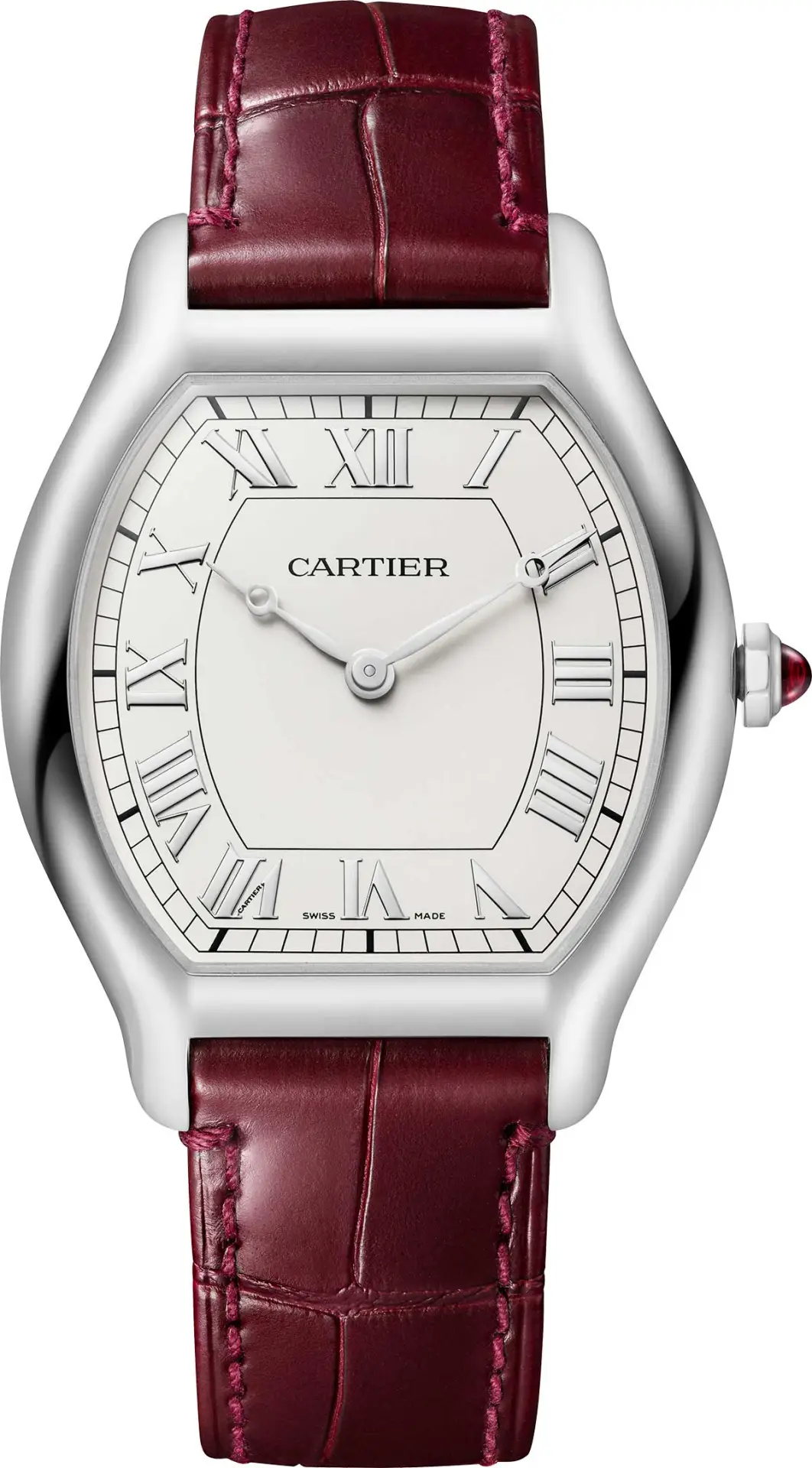
Indeed, the Parisian horological roots run deep, but it’s not all Cartier. From Louis Erard’s whimsical collaboration with French interior-designer-turned-watchmaker Alain Silberstein to the dreamy, avant-garde designs of Paris-based Trilobe, there’s something for everyone in this mix.
Of all the watches Cartier introduced at Watches and Wonders Geneva this year, the Tortue re-edition was the most talked-about. Even older than the Tank, the tortoise-shaped model (born in 1912) is now available in a monopusher chronograph as well as the simpler “hours and minutes” platinum version shown here. Limited to 200 pieces, the stylish and shapely Tortue, which comes out in September, makes clear that even though Cartier manufactures all of its watches in Switzerland, the Paris-based brand is French to its core. $54,770.
Breguet Classique Double Tourbillon “Quai de l’Horloge” 5345
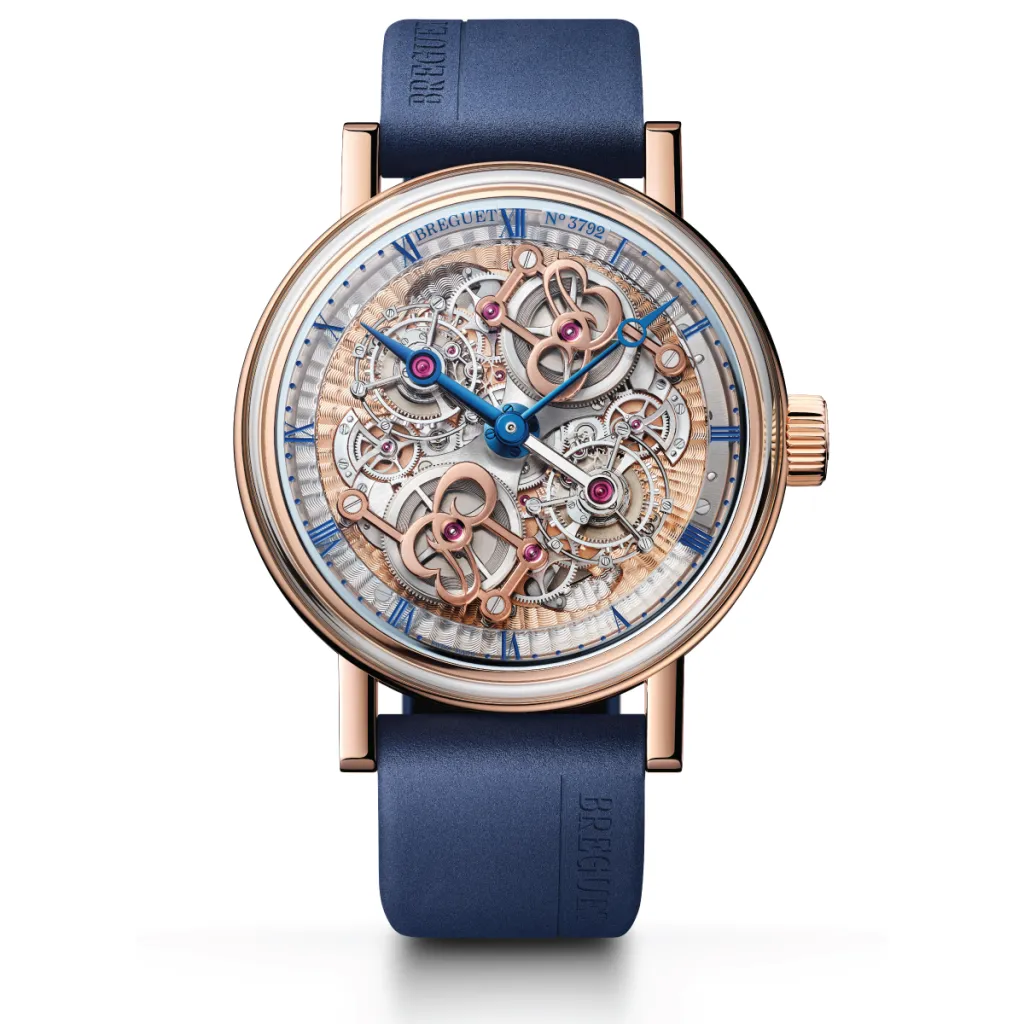
Although Breguet is now based in Switzerland, its namesake, Abraham-Louis Breguet, inventor of the tourbillon as well as the now-ubiquituous Breguet hands and numerals, made his mark on horology in Paris, where he maintained a workshop at 39 Quai de l’Horloge. The brand pays tribute to that history with its latest tourbillon, a 46 mm rose gold wristwatch equipped with not one, but two of the whirling mechanisms. Be sure to admire the engraving on the back of the movement, which depicts an aerial view of the workshop. C’est magnifique! Price on request.
Trilobe Les Matinaux L’Heure Exquise Dune Edition
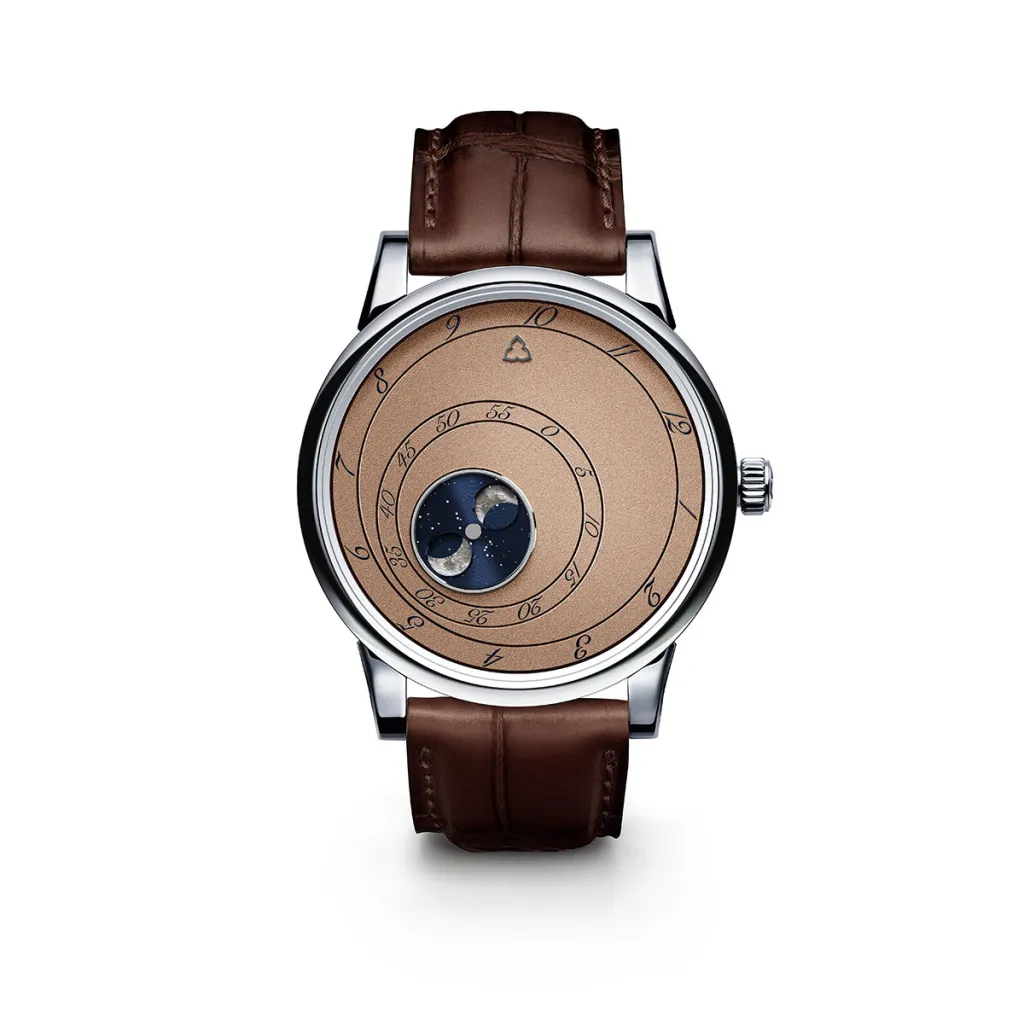
In 2018, Paris-based Trilobe introduced its Les Matinaux (“The Morning”) collection, and with it, a new way of telling the time. Employing a wandering display, the watch used three discs that rotated counterclockwise and three fixed pointers to indicate the hours, minutes and seconds. Named after a collection by the midcentury French poet René Char, the series recently spawned a new sand-colored Dune edition that marks the brand’s entrée into the world of complications. Limited to 100 pieces, the model, dubbed L’Heure Exquise (“The Exquisite Hour”), features a moonphase complication that evokes the orbit of the Moon around the Earth against the backdrop of a starry night sky. $21,995
Chanel Monsieur de Chanel Édition Superleggera Intense Black
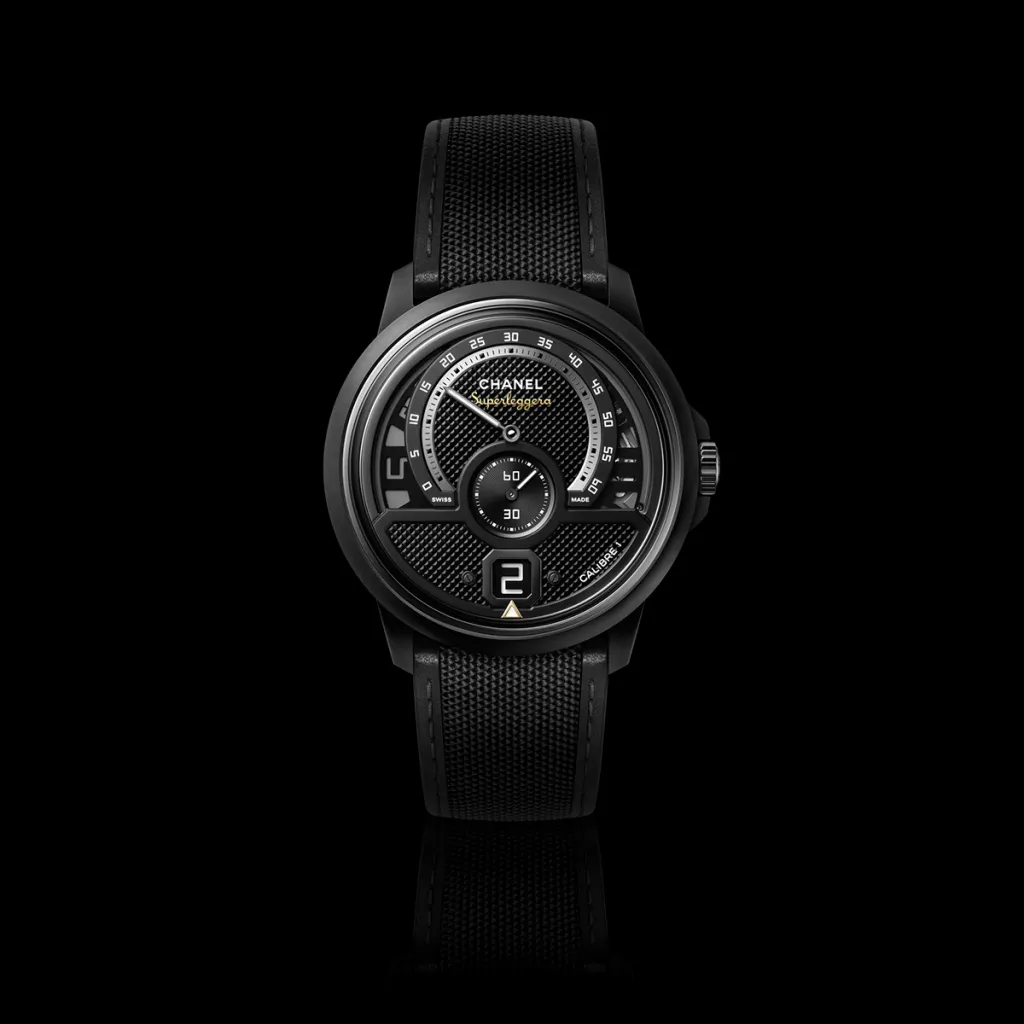
Arguably the Frenchiest brand on our list, Chanel made a name for itself as a high-end (as opposed to fashion) watchmaker in 1999, when it introduced its signature timepiece, the J12 (in unusual-for-the-time ceramic, no less). At Watches and Wonders Geneva in April, the brand upped the ante with its latest Monsieur timepiece, the Superleggera Intense Black, a limited edition of 100 pieces inspired by car racing. Housed in a matte black ceramic and steel case, the watch features a matte black guilloché dial and comes on a black nylon strap with black calfskin leather trim and lining. $69,651
Hermès Arceau Grand Tralala Brides et Mors
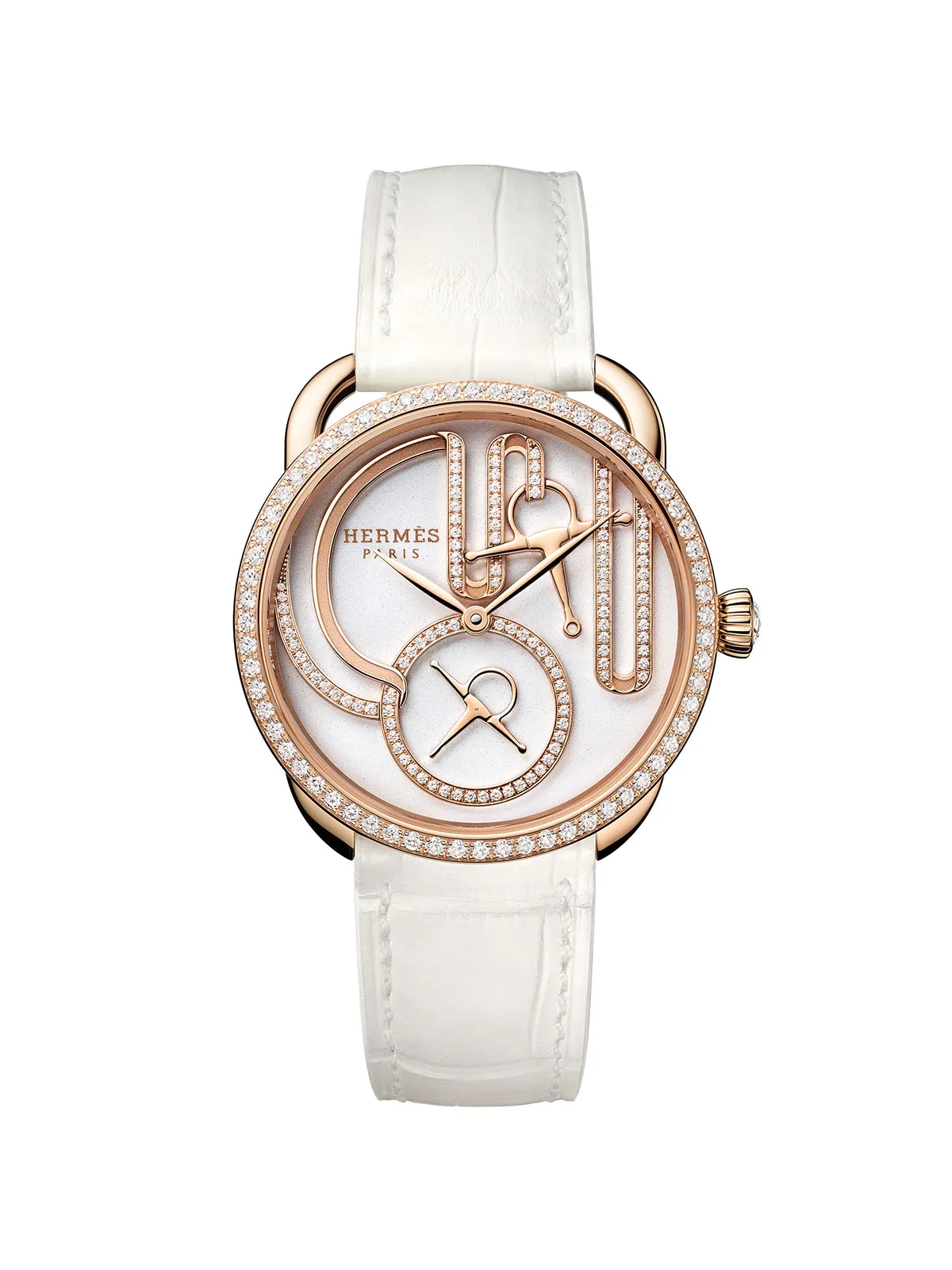
Like so many of Hermès’s most sought-after watches, the new 34 mm Arceau Grand Tralala Brides et Mors traces its design to another Hermès product, in this case the Grand Tralala silk scarf created by French artist Virginie Jamin. Patterned after the prestigious harnesses worn by the Royal Hungarian Bodyguard in the 19th century, the graphic design evokes the look of intertwined bridles and bits within a rose gold frame. Note the bit-shaped seconds hand! $72,172
Louis Erard x Alain Silberstein Smile-Day
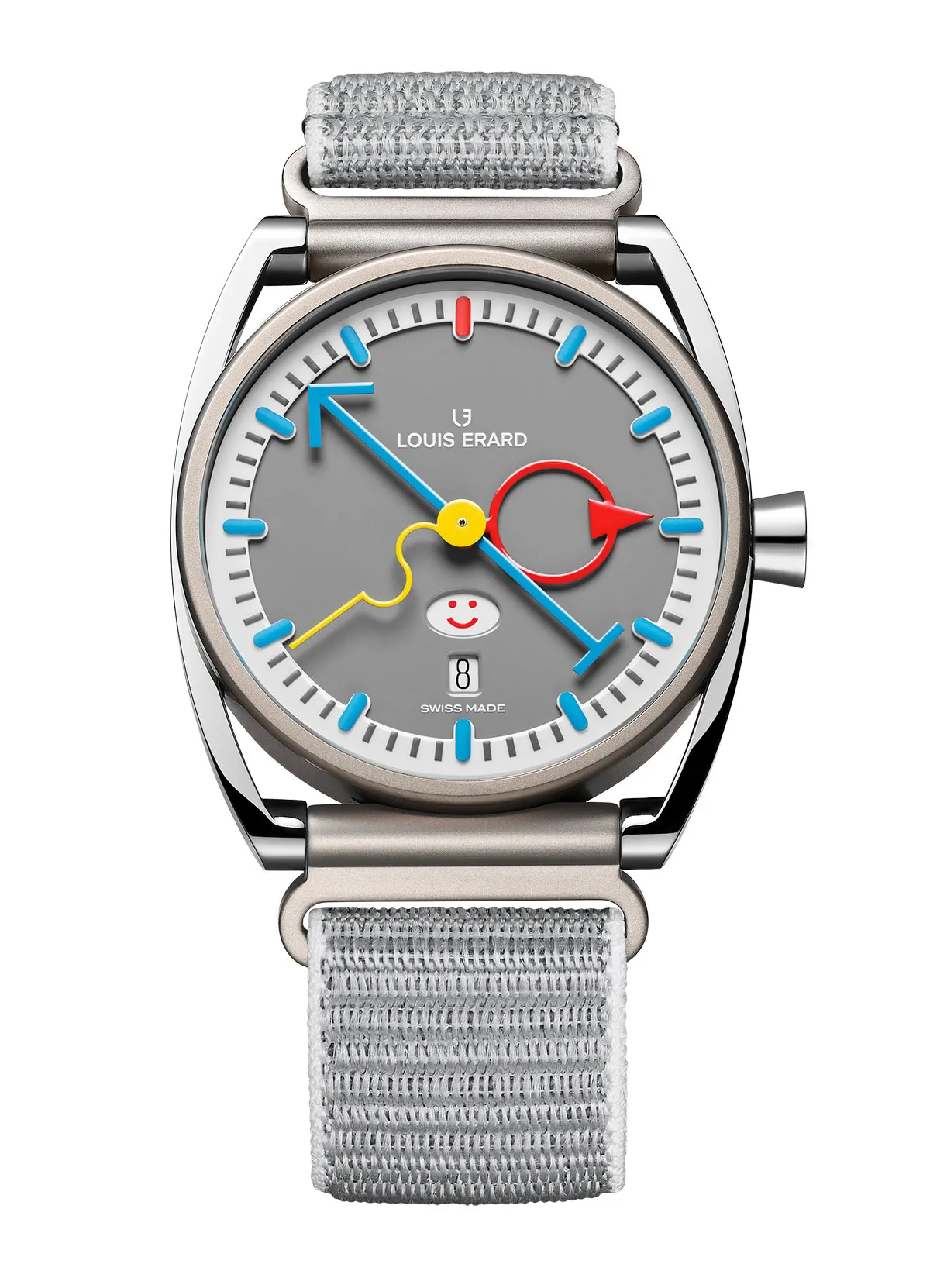
Imagine if Rolex’s much-talked-about emoji watch of 2023 had a child with the Memphis Group, a collective of Milan-based architects and designers who became known in the 1980s for their use of bright primary colors and bold patterns. That’s a quick way to describe the new 40 mm Smile-Day limited edition in titanium from Swiss watchmaker Louis Erard, whose latest collaboration with the iconoclastic French watchmaker Alain Silberstein reflects his signature whimsy. Silberstein was trained in graphic design and architecture in Paris by former members of Germany’s Bauhaus faculty, and he takes his whimsy very seriously. Between the aperture at six o’clock featuring a sliding carousel of seven emojis, the yellow squiggly seconds hand and the nostalgic color scheme, the piece is an instant classic. $8,019
Louis Vuitton Escale
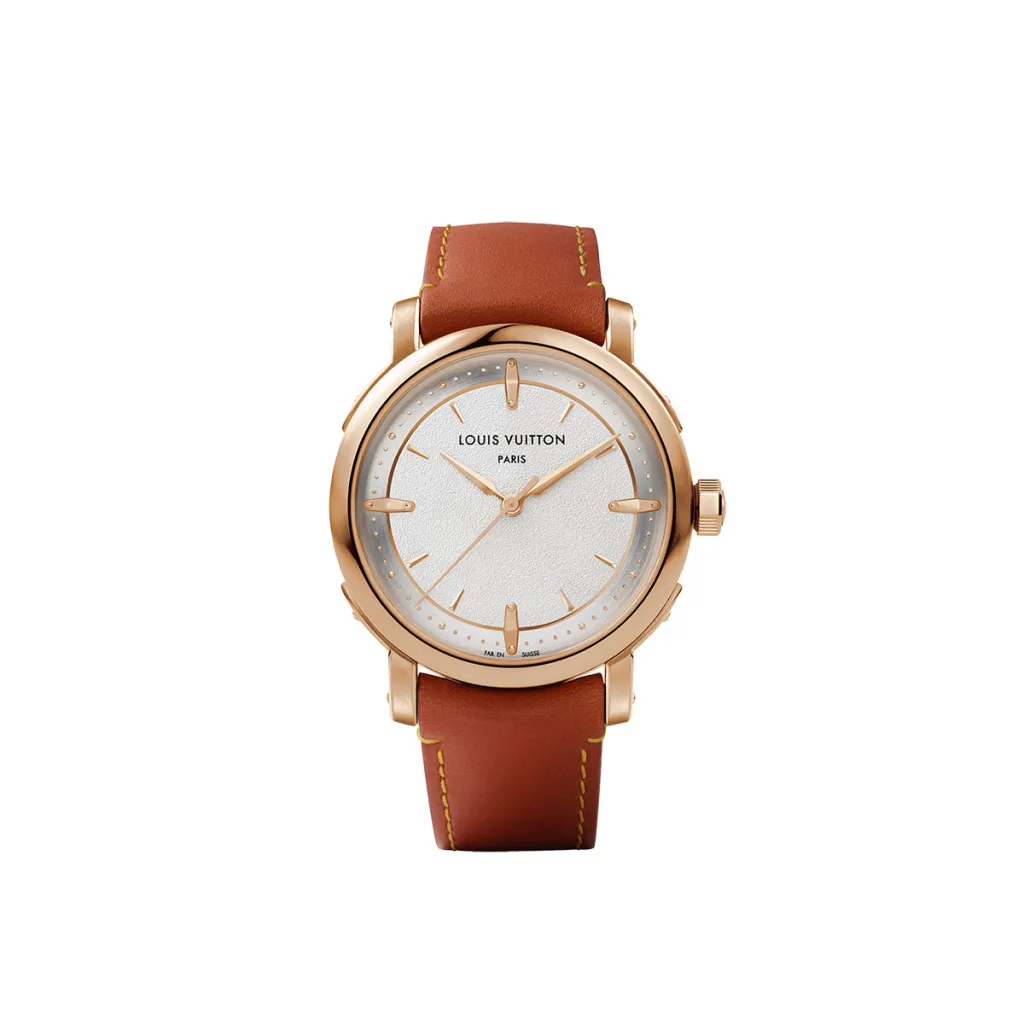
The dress watch revival continues with the new Escale by Louis Vuitton, an elegant timepiece honoring the 10th anniversary of the Escale collection (its first time-only, three-hand watch). Of the four new models in the line, two come in rose gold (like the 39 mm automatic model shown here), while the other two come in platinum. The former feature textured dials designed to evoke the suppleness and tactility of the Louis Vuitton Monogram canvas on metal. Equipped with a chronometer-certified movement with 50 hours of power reserve, the rose-gold Escale comes on a calf-leather strap. In a press release, the brand made sure to emphasize the model’s roots: “Just below the 12 o’clock hour marker, under the Louis Vuitton logo, is one word that encapsulates everything there is to be known about the Escale’s creative rebirth: Paris.” $40,324
Bell & Ross BR 03 Diver Full Lum
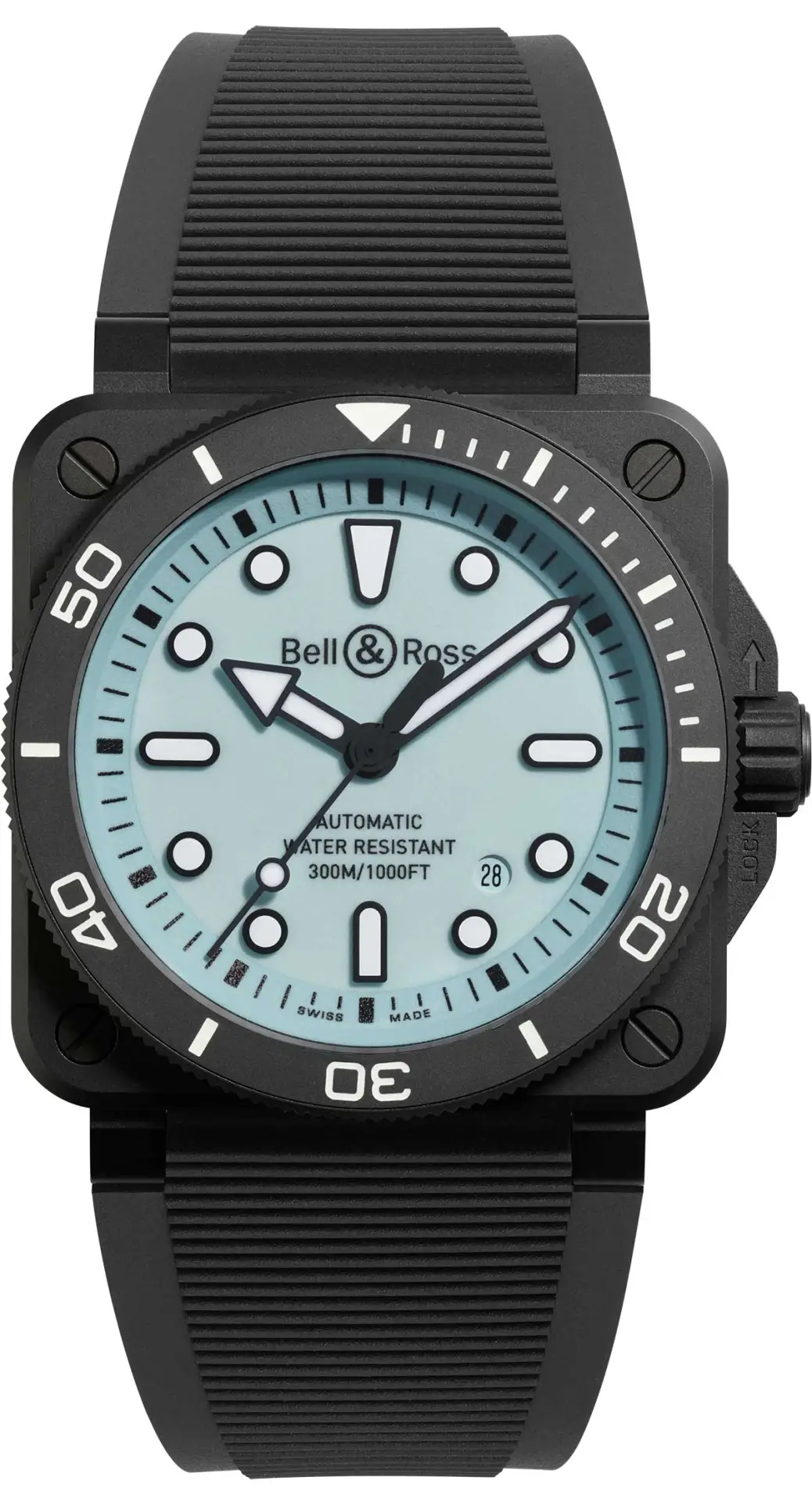
The BR03 Diver from Paris-based Bell & Ross celebrates its seventh anniversary this year. Recognised as the first square diving watch, the 2024 edition is new in more ways than one. Composed of five new models, including the full lume version with a pale blue dial shown here, the series is equipped with an improved automatic movement boasting 54 hours of power reserve, new typography, redesigned hands for optimal legibility and a new adaptable strap. $8,248
You may also like.
How Paris’s Dining, Hotel and Art Scene Got Their Groove Back — Just in Time for the Olympics
The French capital’s cultural life was already on the upswing. Mix in a major global sporting event, and it’s now ready to go toe to toe with any city in the world.
Host cities of modern-day Olympic Games have gotten into the competitive spirit by trying to stage the most spellbinding, over-the-top opening ceremony on record. Beijing enlisted 2008 drummers. London featured James Bond escorting Queen Elizabeth II. All Rio needed to wow the crowd was Gisele, who turned the stadium into her personal catwalk, strutting the length of the field solo. But only Paris could make the unprecedented gamble that the city itself is spectacular enough to be the star of the show.
If all goes according to plan when the Summer Olympics alight in Paris this July, the opening ceremony will play out like a Hollywood epic: timed to coincide with the sinking of the sun, an open-air flotilla of boats will ferry the athlete delegations on the Seine, sailing toward the sunset as hundreds of thousands of spectators cheer from either side of the river’s banks and the bridges above, all bathed in the amber afterglow.
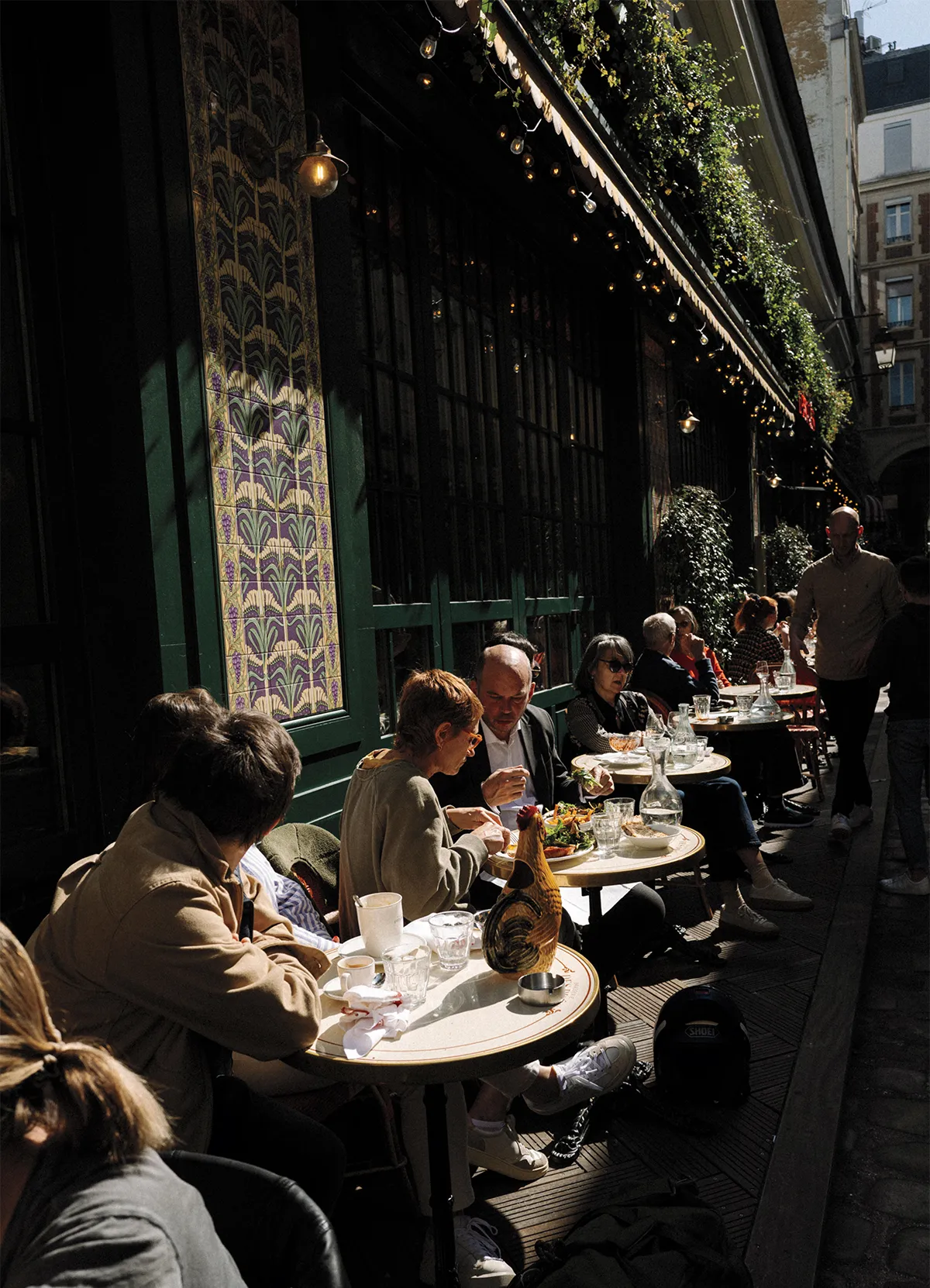
Nico Therin
It will mark the first time the ceremony will be held outside a stadium, let alone on a waterway. So too many of the events themselves, instead of being mounted in mostly generic stadiums on the outskirts of the city, will take place in the heart of Paris, reframing the French capital in a way that locals and visitors alike have never experienced—and that’s sure to dial up the promise of pageantry and emotion.
The Eiffel Tower’s latticed silhouette will serve as the backdrop for beach volleyball at Champs de Mars. Place de la Concorde, where more than a thousand people (including Louis XVI and Marie Antoinette) had their heads lopped off during the French Revolution, will be the site of newly admitted Olympic sports such as skateboarding and breakdancing. And though Olympic swimmers have raced in pools since 1908, this year’s athletes are slated to compete in the river itself. (Competitions will also take place in cities across France, from Lyon to Marseille, and Tahiti in French Polynesia will host the surfing event.)
The specs are ambitious and inventive, and in some ways could restore the city’s reputation for audacity. Because while the City of Light may be known as the cradle of fashion, culture and gastronomy, not too long ago it was also regularly accused of slipping into a lazy, even smug, complacency—stuck in its ways, resting on the laurels of its storied past.
In the food world, those doldrums translated into controversial snubs from the influential World’s 50 Best Restaurants list, known for flushing out avant-garde chefs. The French Michelin Guide, once considered the ultimate arbiter of fine dining, suddenly seemed staid and irrelevant. London and Berlin took Europe’s centre stage in art and design. Even President Emmanuel Macron described his fellow countrymen as resistant to change, much to the ire of those fellow countrymen—and countrywomen.

But influential creatives and Parisians say that in the years leading up to the Games, and particularly since the pandemic, something has shifted. “I really think that during the last 10 years, Paris opened itself to more new things, for different trends,” says Hélène Darroze, the acclaimed chef whose six restaurants include Michelin two-star Marsan in Paris and her three-star namesake at The Connaught in London. “Paris is happier than before, more joyful than before.”
There’s a giddy sense of anticipation, says the illustrator Marin Montagut, who has collaborated with Le Bon Marché and the Ritz Paris and owns an eponymous boutique in Saint-Germain-des-Prés where he sells hand-painted glassware and porcelain decor. “It feels like Paris is trying to look very, very pretty for a very important evening. She’s been getting some plastic surgery and is trying to get ready in time,” he says with a chuckle. “There’s just a lot of effervescence in the city.”
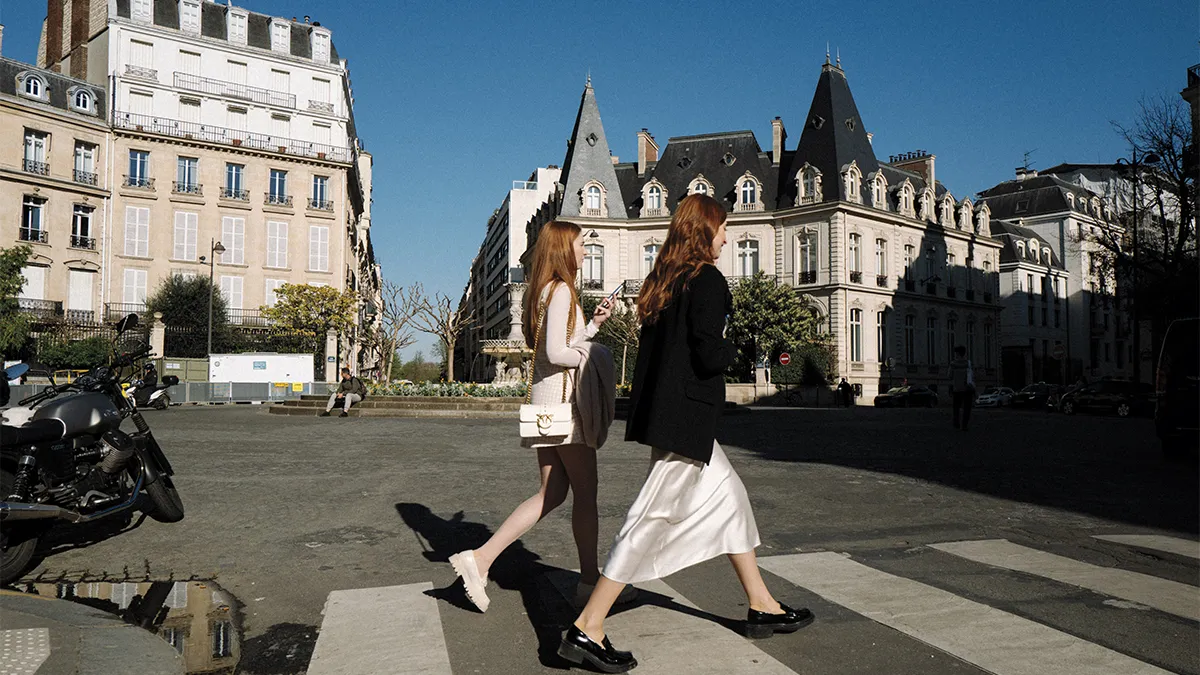
Nico Therin
For better or for worse, some of the credit for that renewed vitality belongs to the light-as-soufflé Netflix series Emily in Paris, which quickly became the collective escapist fantasy for viewers around the world who were grounded by the Covid-19 virus. Another part of that newfound energy, though, can be traced to the frenzied building of luxury hotels, restaurants, galleries, museums and boutiques over the past few years, including Montagut’s own Paris-themed shop, which he opened in 2020.
In the past three years alone, 25 new five-star hotels debuted across the city, bringing the total to 101. Noteworthy newcomers include Madame Rêve, Kimpton St. Honoré Paris, Château des Fleurs, Maison Proust, LVMH’s Cheval Blanc Paris, and Chopard’s first boutique hotel here, 1 Place Vendôme. The dual autumn 2023 openings of Le Grand Mazarin and La Fantaisie hotels marked the Paris debut of Swedish designer Martin Brudnizki, whose playfully modern, maximalist and flamboyant aesthetic injected colour and character into Paris’s elite hotel scene.
In parallel with the growth of traditional hotels, new players in the luxury rental market are emerging, joining the likes of Le Collectionist and Belles Demeures. Founded in 2020, Highstay rents out luxury serviced apartments equipped with kitchens and living spaces. The firm’s current portfolio includes 36 apartments in areas such as the Champs-Élysées and Saint-Honoré, and another 48 are under construction—all of which it owns. There is no check-in (guests are sent digital access codes) and all concierge requests, including housekeeping and travel reservations, are made via live chat on a dedicated guest portal. “The goal is that guests get the real Parisian experience and feel like an insider, like a city dweller,” says general director Maxime Lallement.
The idea of making Paris as welcoming as a second home is also what drives the luxury real-estate market for foreign buyers, particularly Americans, says Alexander Kraft, CEO of Sotheby’s International Realty France-Monaco. He sees 2024 as a “transition year” and says that the local market is moving at two different speeds: while demand for properties between roughly $1.5 million and $8.5 million has cooled, high-end properties between about $17 million and $85 million continue to sell fast among buyers from the Middle East. Kraft predicts the market will pick up in 2025 following the US presidential election. “Paris is one of those real-estate markets that is eternally popular,” he says. “Contrary to other international cities, it really has broad appeal.”
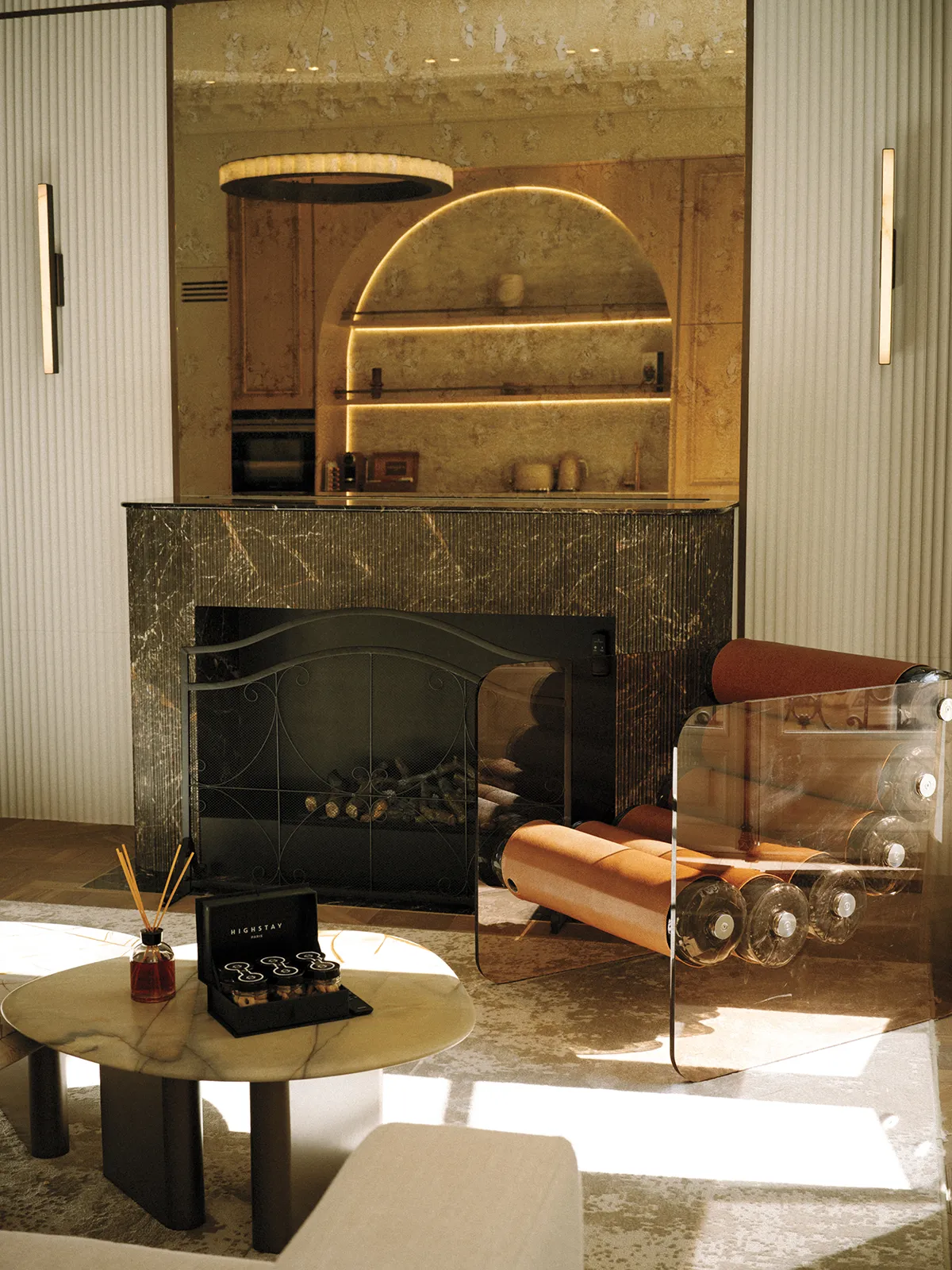
Nico Therin
Montreal-born, New York–based interior designer Garrow Kedigian is one of those frequent visitors who decided to take the leap and buy his own pied-à-terre in Paris a few years ago, after a lifetime of travelling back and forth for both work and pleasure.
As a part-time resident, Kedigian says he too has noticed a palpable shift in the city’s vibe, which he attributes to a renewed appreciation for tourists following their absence during the pandemic, as well as an “international flair” that has given the city a fresh spark. “There’s a lot more cultural diversity than there was before,” he says. “In that respect it’s a bit like New York. And I think that now the interface between Paris’s unique flavour and the international populace is a little bit smoother.”
For Montagut, one of the best examples of this synergy can be found in Belleville, in the city’s east end, where independent artists, musicians and other urban creatives rub shoulders in Chinese, African, and Arab restaurants and businesses. “There’s a social and cultural diversity here, and for me this is really important,” Montagut says. “If Paris was just the 6th arrondissement, it would be boring.”
The eastern edge of Paris is also one of the preferred neighbourhoods of Michael Schwartz, the marketing and communications manager for Europe at French jewellery house Boucheron. A recent New York City transplant, he is drawn to the burgeoning number of gastronomic gems far from the madding tourist crowds.

Nico Therin
He points to sister restaurants Caché and Amagat (the names mean “hidden” in French and Catalan, respectively), discreetly located at the end of a cobblestoned cul-de-sac, as favourites. With backgrounds in fashion and advertising, the Italian duo who run them have attracted equally fashionable locals to this hitherto quiet part of town. Caché serves up fresh Mediterranean seafood dishes, while next door, Amagat specialises in Catalan tapas.
Then there’s Soces, a corner seafood bistro on rue de la Villette, where you might find Jean-Benoît Dunckel, who co-wrote the score to Sofia Coppola’s film The Virgin Suicides when he was part of the electronic-music duo Air (Dunckel’s recording studio is in the area), or the French designers behind the Coperni fashion line, Sébastien Meyer and Arnaud Vaillant. “This is a really special restaurant,” says Schwartz. “It’s frequented by really cool creatives, designers and musicians, and it’s kind of a destination restaurant for most people because it’s not central.”
What makes Paris’s dining scene so exciting now, according to Stéphane Bréhier, editor in chief of French restaurant guide Gault& Millau, is a sense of fearlessness among younger chefs who reject the traditional trajectory that begins with a lowly stage in a Michelin-star kitchen. What’s more, visitors are likewise foregoing Michelin establishments in favour of newer, more experimental dining spots. “Over the last few years, there’s been a profusion of young chefs who don’t want to work for other people and are daring to set up their own shop,” Bréhier says. “The gastronomic scene is booming in Paris.”

Nico Therin
These bold, emerging chefs feel less bound not only to their elders but also to French cuisine itself. “It has changed a lot,” says Hélène Darroze, who opened Marsan, her first Parisian restaurant, 25 years ago. “The new generation travelled a lot—in South America, for example, in Asia—before opening a restaurant or being a head chef somewhere. They opened themselves to other cultures. This is why the culinary scene at the moment is very interesting in Paris; because it’s a mix of very famous chefs with Michelin stars but also young chefs who don’t care about Michelin stars—they just want to explore so many fields.”
The ever-growing importance of social media and its insatiable hunger for envy-inducing images is driving another major trend in the dining scene: rooftop spots, including Mun and Girafe in the Golden Triangle, the area bordered by avenues Montaigne and George V and the Champs-Élysées. “A lot of rooftops have opened in Paris, where before they were pretty much nonexistent apart from the Eiffel Tower and the Montparnasse Tower,” says Dimitri Ruiz, head concierge at Hôtel Barrière Fouquet’s Paris on the Champs-Élysées.
Five-star Right Bank hotels SO/ and Cheval Blanc Paris have watering holes that offer sweeping vistas of the Seine. But perhaps the most coveted perch during the opening ceremony will be the Champagne bar at La Tour d’Argent restaurant, which boasts unobstructed views of the Notre-Dame Cathedral and the Seine. (And yes, someone already had the idea to book it for a private event.) Famous for its signature pressed duck as well as for hosting monarchs and heads of state, the historic restaurant recently underwent a major renovation that included the addition of the aerie, which opened late last summer. “It’s only been in the last 10 years or so that Paris has been developing rooftops, and it’s really taking off like wildfire,” says third-generation owner André Terrail.
Paris’s venerated fashion industry has also found ways to innovate, with fresh faces keeping their fellow couturiers on their toes and the shopping options enticing. In 2022, for example, Simon Porte Jacquemus opened his first boutique in the city on avenue Montaigne—home to Gucci, Chanel, and Prada, among other venerable names—and in March, at the age of 34, became France’s youngest fashion designer to be named a Chevalier de l’Ordre des Arts et des Lettres for his contributions to the field. That kind of success has a ripple effect in the creative community.
“Almost every street has the name of an artist or a politician,” says Charaf Tajer, the Parisian-born creative director behind the London-based Casablanca sportswear line. “So the city reminds me always that the people who came before me, who walked those streets, created the future in a way. As much as [Paris] seems stuck in time visually, you can also feel the energy of people creating the present.”
Interior designer David Jimenez, whose 2022 book Parisian by Design compiles his Francophile projects, moved to the city in 2015 and spent his first few years living near the Champs-Élysées, which he says has undergone a noticeable revival. Along with Jacquemus’s arrival, new luxury openings or expansions—including Burberry, Saint Laurent, Bottega Veneta, and Panerai—and city-led greening efforts are bringing Parisians back to the 8th arrondissement, long dismissed as an overcrowded tourist trap where fast-food and fast-fashion chains had colonised the once glamorously luxe avenue. Now, Dior’s captivating Peter Marino–designed museum draws legions of fans, while the city has been busy planting more trees, renovating gardens and repairing damaged sidewalks as part of a long-term embellishment plan. And on the first Sunday of every month, the entire length of the Champs-Élysées becomes a pedestrian-only promenade. “It’s an exciting evolution in a part of the city that seemed sleepy and perhaps lost its way a little bit,” Jimenez says. “Now there’s a thrust forward.”
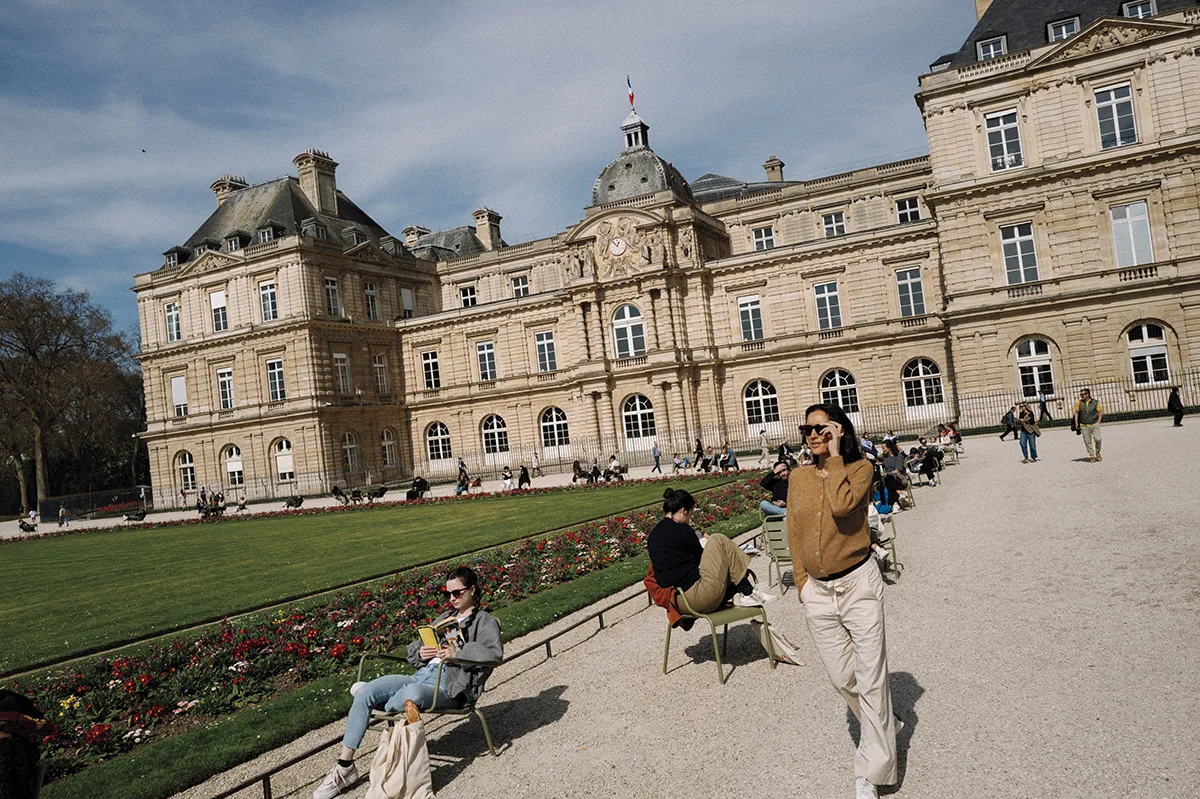
Nico Therin
The thriving fashion houses are responsible for more than maintaining the city’s unparalleled reputation for chic. To a large degree, they have also helped revive its status as an art capital. The billions generated by LVMH (parent of Louis Vuitton, Dior and Berluti, among others) and Kering (Alexander McQueen, Gucci, Bottega Veneta, et al.) funded the extraordinary contemporary art collections amassed by their founders, Bernard Arnault and François Pinault, respectively. The rivals rewarded their hometown with two museums, Fondation Louis Vuitton and Bourse de Commerce, that have helped make it a leader in contemporary art.
Also lending a hand: Brexit, which persuaded many international galleries to brush up on their French. One of the most talked-about recent additions is the powerhouse Hauser & Wirth, which opened in a 19th-century hôtel particulier near the Champs-Élysées last year. David Zwirner arrived in 2019, Mariane Ibrahim in 2021, and Peter Kilchmann the following year, all joining long-established Parisian galleries including Perrotin and Thaddaeus Ropac. The City of Light even snagged its own coveted annual installment of Art Basel: Paris+, which now runs every October in the Grand Palais.
“Quite frankly, Paris has been putting up some of the most incredible exhibitions in institutions in Europe,” says Serena Cattaneo Adorno, senior director at Gagosian. “And a lot of private collectors have also decided to open spaces in the city, creating a great dynamic between public and private galleries.”

The always-savvy Gagosian, on rue Ponthieu, has hit upon an authentic tie-in with the Games: a summer exhibition featuring Olympic posters created over the years by celebrated artists from Picasso on up to Warhol, Hockney and Tracey Emin. “Once you start digging, you find that a lot of artists have reflected on sports and the engagement of the body,” Cattaneo Adorno says. “It’s just a really pure and beautiful message about how art and sports have dialogues that can be somewhat surprising.”
A few months out from the festivities on the Seine, interior decorator Jimenez sums up the mood of many locals, saying (only half-jokingly), “I think for most Parisians, there’s a sense of curiosity, optimism, excitement—and an exit plan, in that order.”
While polling shows that nearly half of Parisians intend to vacate the city during the games, Jimenez notes that he will be watching the opening ceremony with friends who live in an apartment overlooking the Seine. “I want to be part of the excitement. I want to see as much as I can and be energised by this very special and unique moment,” he says. “It’s a once-in-a-lifetime opportunity, and I am deeply grateful to be able to experience it first-hand as an American living in Paris.”
Additional reporting by Lucy Alexander and Justin Fenner.
You may also like.
Watches & Wonders 2024 Showcase: Hermès
We head to Geneva for the Watches & Wonders exhibition; a week-long horological blockbuster featuring the hottest new drops, and no shortage of hype.
With Watches & Wonders 2024 well and truly behind us, we review some of the novelties Hermès presented at this year’s event.
—
HERMÈS
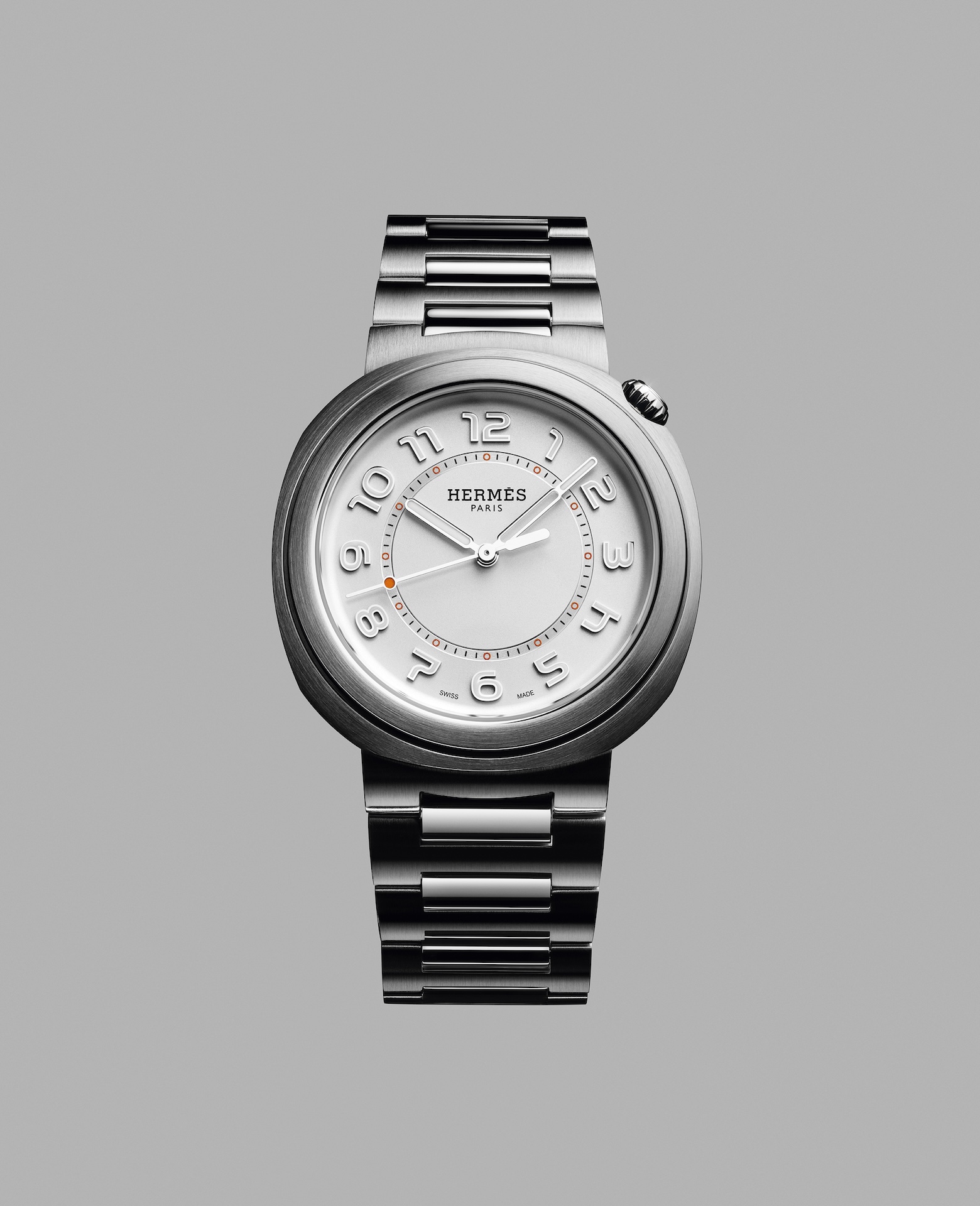
Moving away from the block colours and sporty aesthetic that has defined Hermès watches in recent years, the biggest news from the French luxury goods company at Watches & Wonders came with the unveiling of its newest collection, the Hermès Cut.
It flaunts a round bezel, but the case middle is nearer to a tonneau shape—a relatively simple design that, despite attracting flak from some watch aficionados, works. While marketed as a “women’s watch”, the Cut has universal appeal thanks to its elegant package and proportions. It moves away from the Maison’s penchant for a style-first product; it’s a watch that tells the time, not a fashion accessory with the ability to tell the time.
Hermès gets the proportions just right thanks to a satin-brushed and polished 36 mm case, PVD-treated Arabic numerals, and clean-cut edges that further accentuate its character. One of the key design elements is the positioning of the crown, boldly sitting at half-past one and embellished with a lacquered or engraved “H”, clearly stamping its originality. The watch is powered by a Hermès Manufacture movement H1912, revealed through its sapphire crystal caseback. In addition to its seamlessly integrated and easy-wearing metal bracelet, the Cut also comes with the option for a range of coloured rubber straps. Together with its clever interchangeable system, it’s a cinch to swap out its look.
It will be interesting to see how the Hermès Cut fares in coming months, particularly as it tries to establish its own identity separate from the more aggressive, but widely popular, Ho8 collection. Either way, the company is now a serious part of the dialogue around the concept of time.
—
Read more about this year’s Watches & Wonders exhibition at robbreport.com.au
You may also like.
Watch This Space: Mike Nouveau
Meet the game-changing horological influencers blazing a trail across social media—and doing things their own way.
In the thriving world of luxury watches, few people own a space that offers unfiltered digital amplification. And that’s precisely what makes the likes of Brynn Wallner, Teddy Baldassarre, Mike Nouveau and Justin Hast so compelling.
These thought-provoking digital crusaders are now paving the way for the story of watches to be told, and shown, in a new light. Speaking to thousands of followers on the daily—mainly via TikTok, Instagram and YouTube—these progressive commentators represent the new guard of watch pundits. And they’re swaying the opinions, and dollars, of the up-and-coming generations who now represent the target consumer of this booming sector.
—
MIKE NOUVEAU

Can we please see what’s on the wrist? That’s the question that catapulted Mike Nouveau into watch stardom, thanks to his penchant for highlighting incredibly rare timepieces across his TikTok account of more than 400,000 followers. When viewing Nouveau’s attention-grabbing video clips—usually shot in a New York City neighbourhood—it’s not uncommon to find him wrist-rolling some of the world’s rarest timepieces, like the million-dollar Cartier Cheich (a clip he posted in May).
But how did someone without any previous watch experience come to amass such a cult following, and in the process gain access to some of the world’s most coveted timepieces? Nouveau admits had been a collector for many years, but moved didn’t move into horology full-time until 2020, when he swapped his DJing career for one as a vintage watch specialist.
“I probably researched for a year before I even bought my first watch,” says Nouveau, alluding to his Rolex GMT Master “Pepsi” ref. 1675 from 1967, a lionised timepiece in the vintage cosmos. “I would see deals arise that I knew were very good, but they weren’t necessarily watches that I wanted to buy myself. I eventually started buying and selling, flipping just for fun because I knew how to spot a good deal.”
Nouveau claims that before launching his TikTok account in the wake of Covid-19, no one in the watch community knew he existed. “There really wasn’t much watch content, if any, on TikTok before I started posting, especially talking about vintage watches. There’s still not that many voices for vintage watches, period,” says Nouveau. “It just so happens that my audience probably skews younger, and I’d say there are just as many young people interested in vintage watches as there are in modern watches.”
View this post on Instagram
Nouveau recently posted a video to his TikTok account revealing that the average price of a watch purchased by Gen Z is now almost US$11,000 (around $16,500), with 41 percent of them coming into possession of a luxury watch in the past 12 months.
“Do as much independent research as you can [when buying],” he advises. “The more you do, the more informed you are and the less likely you are to make a mistake. And don’t bring modern watch expectations to the vintage world because it’s very different. People say, ‘buy the dealer’, but I don’t do that. I trust myself and myself only.”
—
Read more about the influencers shaking up horology here with Justin Hast, Brynn Wallner and Teddy Baldassare.
You may also like.
5 Lounge Chairs That Add Chic Seating to Your Space
Daybeds, the most relaxed of seating solutions, offer a surprising amount of utility.
Chaise longue, daybed, recamier, duchesse brisée—elongated furniture designed for relaxing has a roster of fancy names. While the French royal court of Louis XIV brought such pieces to prominence in fashionable European homes, the general idea has been around far longer: The Egyptian pharaohs were big fans, while daybeds from China’s Ming dynasty spurred all those Hollywood Regency fretwork pieces that still populate Palm Beach living rooms. Even Mies van der Rohe, one of design’s modernist icons, got into the lounge game with his Barcelona couch, a study of line and form that holds up today.
But don’t get caught up in who invented them, or what to call them. Instead, consider their versatility: Backless models are ideal in front of large expanses of glass (imagine lazing on one with an ocean view) or at the foot of a bed, while more structured pieces can transform any corner into a cozy reading nook. Daybeds may be inextricably linked to relaxation, but from a design perspective, they put in serious work.
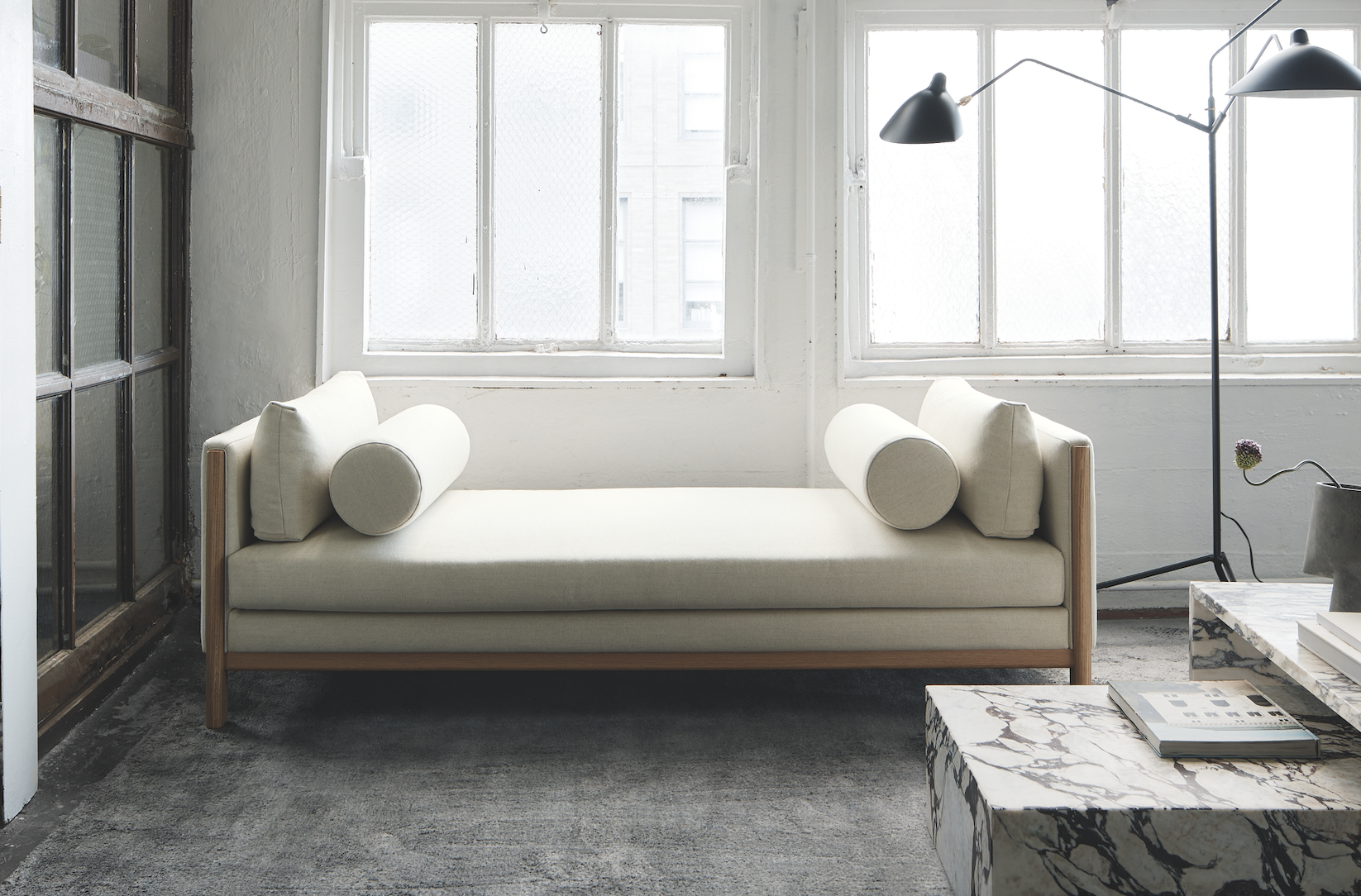
Emmy, Egg Collective
In designing the Emmy chaise, the Egg Collective trio of Stephanie Beamer, Crystal Ellis and Hillary Petrie, who met as students at Washington University in St. Louis, aimed for versatility. Indeed, the tailored chaise looks equally at home in a glass skyscraper as it does in a turn-of-the-century town house. Combining the elegance of a smooth, solid oak or walnut frame with the comfort of bolsters and cushioned upholstery or leather, it works just as well against a wall or at the heart of a room. From around $7,015; Eggcollective.com
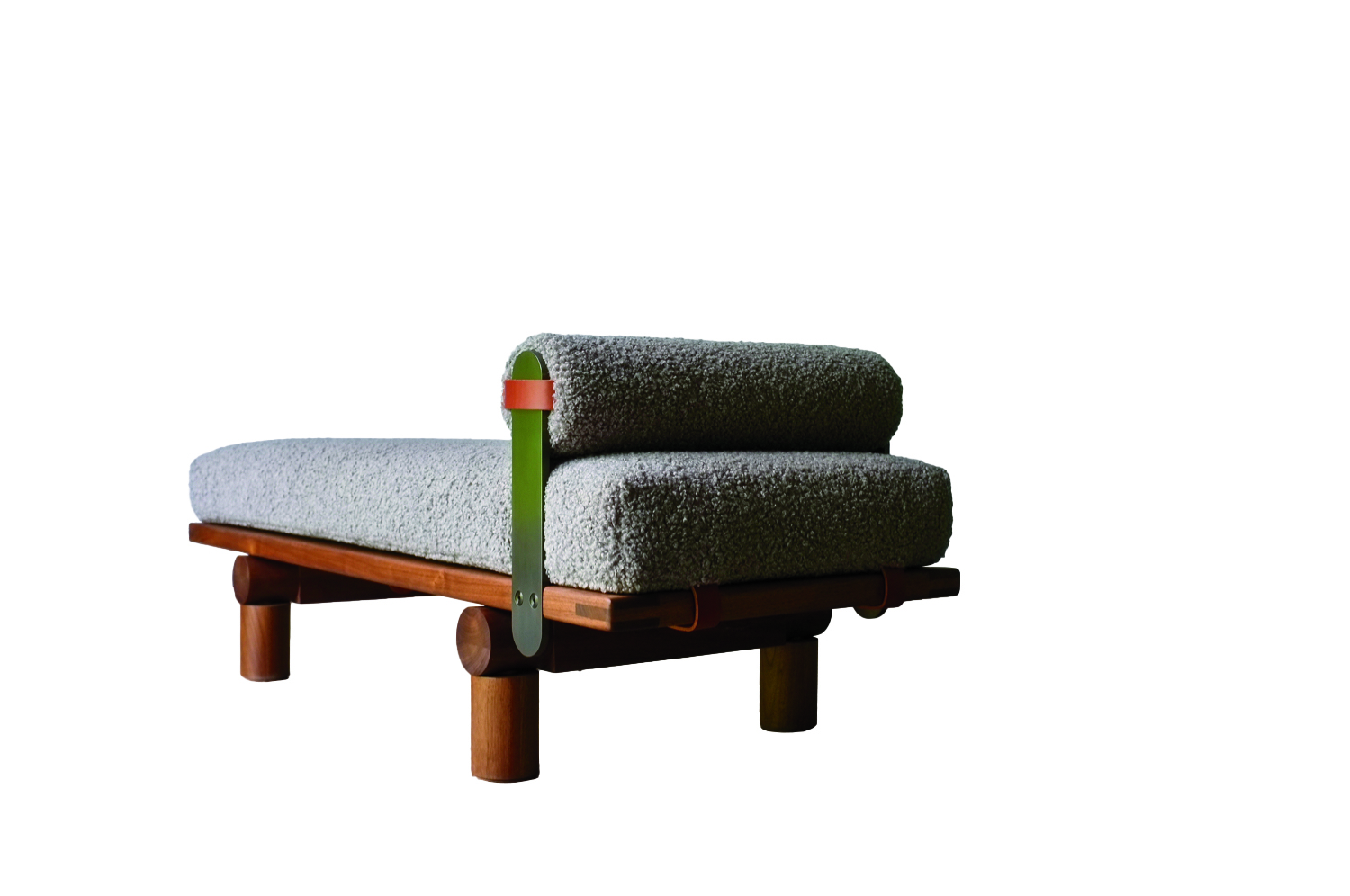 Plum, Michael Robbins
Plum, Michael Robbins
Woodworker Michael Robbins is the quintessential artisan from New York State’s Hudson Valley in that both his materials and methods pay homage to the area. In fact, he describes his style as “honest, playful, elegant and reflective of the aesthetic of the Hudson Valley surroundings”. Robbins crafts his furniture by hand but allows the wood he uses to help guide the look of a piece. (The studio offers eight standard finishes.) The Plum daybed, brought to life at Robbins’s workshop, exhibits his signature modern rusticity injected with a hint of whimsy thanks to the simplicity of its geometric forms. Around $4,275; MichaelRobbins.com
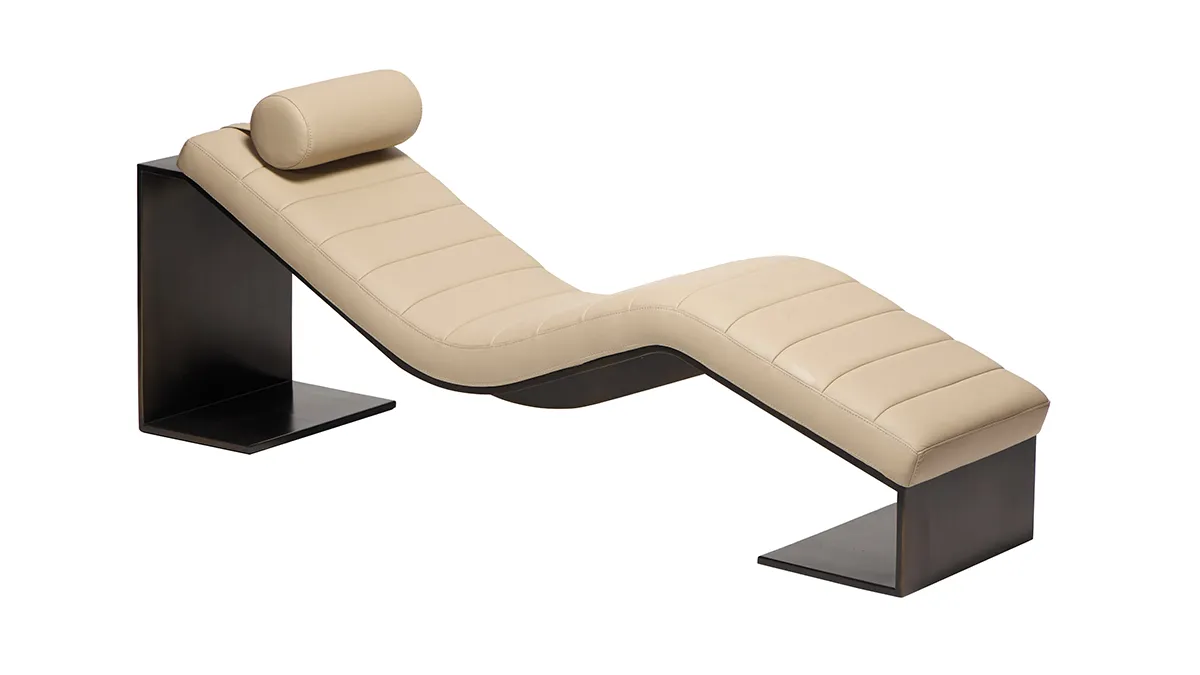
Kimani, Reda Amalou Design
French architect and designer Reda Amalou acknowledges the challenge of creating standout seating given the number of iconic 20th-century examples already in existence. Still, he persists—and prevails. The Kimani, a bent slash of a daybed in a limited edition of eight pieces, makes a forceful statement. Its leather cushion features a rolled headrest and rhythmic channel stitching reminiscent of that found on the seats of ’70s cars; visually, these elements anchor the slender silhouette atop a patinated bronze base with a sure-handed single line. The result: a seamless contour for the body. Around $33,530; RedaAmalou
Dune, Workshop/APD
From a firm known for crafting subtle but luxurious architecture and interiors, Workshop/APD’s debut furniture collection is on point. Among its offerings is the leather-wrapped Dune daybed. With classical and Art Deco influences, its cylindrical bolsters are a tactile celebration, and the peek of the curved satin-brass base makes for a sensual surprise. Associate principal Andrew Kline notes that the daybed adeptly bridges two seating areas in a roomy living space or can sit, bench-style, at the foot of a bed. From $13,040; Workshop/ APD
Sherazade, Edra
Designed by Francesco Binfaré, this sculptural, minimalist daybed—inspired by the rugs used by Eastern civilizations—allows for complete relaxation. Strength combined with comfort is the name of the game here. The Sherazade’s structure is made from light but sturdy honeycomb wood, while next-gen Gellyfoam and synthetic wadding aid repose. True to Edra’s amorphous design codes, it can switch configurations depending on the user’s mood or needs; for example, the accompanying extra pillows—one rectangular and one cylinder shaped— interchange to become armrests or backrests. From $32,900; Edra






